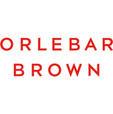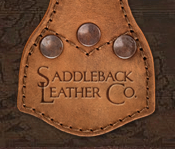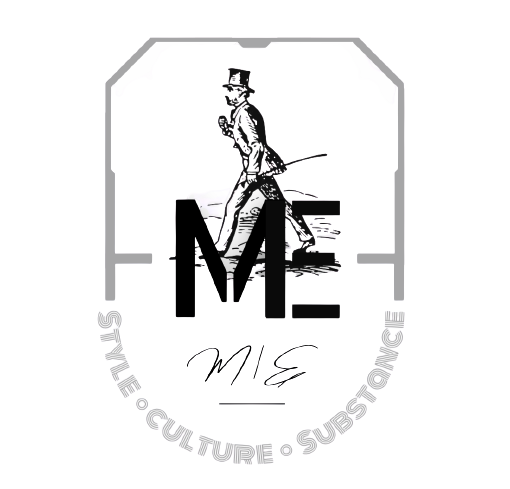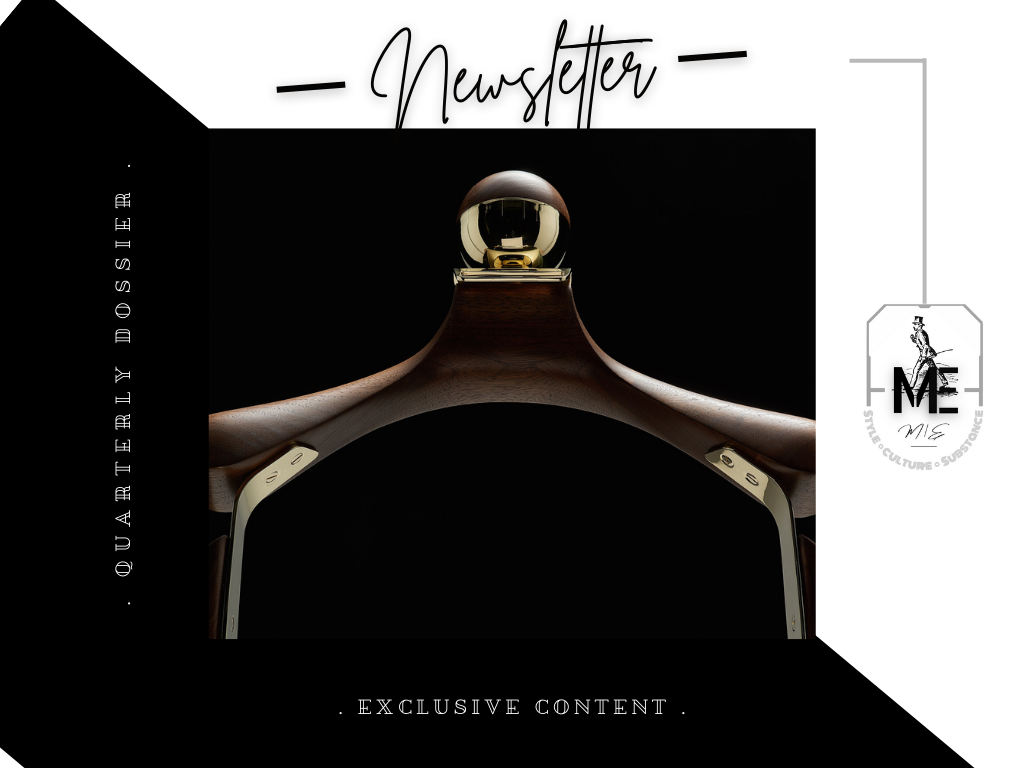With an all-American by way of Britain heritage aesthetic, it is characterized by its understated casual elegance and (systemically) marked by its steely devotion to practical wardrobe essentialism; a distinctive doctrine that highlights (and sees fit in accommodating for) only the bare necessities — a steady slate of basic everyday wears — that one needs to live a peculiar lifestyle in sheer comfort and nothing in the arbitrary manner of collected (ie. trendy seasonal pieces) placeholders that hold no true permanent value.
Which is to say, in other words, that it is a sharply cultivated, ageless style whose signature pieces likely already feature prominently — are routinely afforded pride of place — in most every modern gents wardrobe.
In effect, you could say that the Ivy-prep aesthetic is a living a vestige of tastefully refined American conformity that characteristically embodies the core spirit of American sartorial heritage itself —the endearing sartorial magnum opus of an entire nation as it were.
Buoyed by an ubiquitous stable of easy to wear essentials in an array of supple natural textures, the entire look (and its many branches) is predicated upon (to varying degrees) an initial foundation that was set forth by its founding subculture — the east coast WASP establishment — who further propelled into the mainstream psyche by means of its connotative association and thereafter by one Mr. Ralph Lauren who famously (and successfully) fashioned it as the archetypical wardrobe of choice for those chasing after the "American Dream" — an alluring aura, to be sure, that has been extensively (and successfully) marketed and culturally perpetuated by Mr. Lauren's eponymous brand for the greater extent of the last four decades.
Nevertheless, the core of the look will always remain static and rest upon the foundational merits of the traditional pieces that were passed down from yesteryear, those stylishly characteristic essential cogs -- navy blazers, chinos, bit loafers, et al -- that the Ivy-prep set value above all else for their longevity, the stories that they have to tell (whether inherited or earned), and their versatile nature. Or in other words, the embarrassment of menswear riches that Ivy-preps are known for that always ensure a gent is dressed with poise and grace no matter where his life leads.
As such, preppy style is poetic in its sophisticated simplicity and perfectly symmetrical in its balance of form and function; a form of dress intent not upon breaking down barriers nor driven by an insatiable need for change but rather one that is candidly set upon satisfying a strict functional (and practical) purpose at all times whilst admirably fulfilling the parameters of most any a predefined (occasion specific) dress code that exists.
Why? Perhaps it is because the (modern) Ivy-prep set have time-and-again proven that a gent can indeed actively revel, succeed, and ultimately make his personal mark within the confines of an otherwise omnipresent and commonplace style with ease and unique style in hand. Or perhaps it is due to the belief that preps have a propensity for aging with dignity and in style whilst passing time being perfectly content with life as it is (not what it should or could be); that they (and their signature style) remain essentially the same in almost every regard from birth to death for good reason: because it works. Or maybe just maybe it is because of the romanticized drawing force that underlies the sense of grandeur, excellence, and prestige that it has come to be representatively associated with — that promise of a better life (i.e. the classic American Dream).
Whatever the case may be — for some comfort, others taste, and a select few family bloodlines — at the end of the day for the average gent its main draw is likely about the power of its (imparted) appearance and of simply knowing that he will always look good wearing its peculiar brand of aesthetic fashionability without question.
Point being is that the preppy élan is indeed alive and well and is something that, without equivocation, anybody can now stylishly assimilate themselves into. And many do, seeing as it is as comfortable to wear as it looks whilst extolling all the enduring qualities and virtues of what has become an elegantly nuanced, (near) impeachable form of dress.
So, if you have always fancied dressing like a true prep or just desire a better understanding of what it means to be one, then what follows is a definitive guide on the style that will (hopefully) help you accomplish just such a goal.
From an abridged tale of origin and a breakdown of both its signature pieces and associative lifestyles components to an inspirational style guide and seasonal lookbook, here is a gentleman’s guide to decoding and understanding the worldly renowned, heavily nuanced aesthetic that underlies the universally appealing (and flattering) Ivy-prep aesthetic…
Consequently, for one to properly flesh out what has since become the renowned modern Ivy-Prep look it may well help to have a better understanding of not only the precise manner in which those who are credited with its creation lived their lives but also of the pioneering brands that were responsible for inventing many of the looks signature wardrobe staples. Profoundly versatile in utility, traditionally nondescript in wear, and purposefully understated in its underlying intent so as to not draw any undue attention, the manner in which the Ivy-League set chose to attire itself and the hallmark articles of clothing therein that have come to be innately tied to the preppy sets signature look were (above all else) fashioned to properly reflect and best befit the unique, cultivated lifestyle — from cultural pastimes and professional vocations through leisurely pursuits and preferred vacation destinations — that came to define their lives.
Traditionally, this resulted in a style that stood as a visual representation of not only their prevailing social beliefs, values, and distinctly upper-class roots but more-so of their way of living life. In that vein, you could say that their preferred style was one that was very much a sartorial extension of their innate character and actual (rather then aspirational) lifestyle; something that was at once both perfectly in tune with their insouciant, nonchalant attitude and distinctive social upbringing, a culturally manifested approach to personal dressage always delivered with poise, grace and an innate air of self-assurance — a distinguished form of uniformity and wearable intelligence, in other words, that was immediately identifiable and underscored on a personal level by nothing save that of the subtly nuanced means in which each piece was worn and styled by the individual.
|
Be that as it may, the history of the look is one in which was inspired by both the polo grounds of Great Britain and the innovative spirit of a nation on the brink of world domination — a combination of British heritage wear and formality alongside the spirit of a nation searching for its own identity.
Of first notable fashion by the Gatsbian WASP dominated roaring ‘20s and continued well on — being nurtured and further cultivated upon in the process — through the Great Depression and WWII before hitting its pinnacle upon the Ivy League campus in the ‘60s, the latter of which is often regarded as the fertile breeding ground whereupon the very style itself as we know it today slowly codified itself and flourished; a place where that symbolic air of preppy casualness and sartorial nonchalance was paramount amongst its founding pioneers. |
And playing no small part in fashioning what was to become the preppy look was the venerable Brooks Brothers who were (and remain) THE quintessential Ivy-prep brand — catering to the all-around look + renowned for their city/business wear — who almost single-handedly is responsible for helping craft the parameters of the look as consequence of inventing many of is mainstay essentials from the OCBD (circa 1896) and Sack Suit right through introducing others like the madras short/sport-shirt and Fair Isle, cable-knit fisherman and Argyle heritage sweaters (via India, Britain and Norway respectively) to the preppy masses.
Not to be forgotten either are J. Press, who are often credited as being the trendsetters for what (exclusively) became the iconic campus-centric style itself (its Shaggy Dog Shetland sweater + sports coats are ion particular note), and Norman Hilton, who specialized in Ivy country clothing and the bucolic prep look whilst being regarded as the pioneer the natural shoulder silhouette that is beloved by preps to this day.
Unsurprisingly, it was during this era that such preppy staples as the polo shirt (courtesy of Mr. Rene Lacoste; via France), crewneck raglan sweater, white canvas tennis shoe, and Varsity jacket (to name but a few) slowly began to emerge from the shadows before completely stealing the Ivy League wardrobing spotlight.
Often dismissed, but certainly not to be lost in the (influential) shuffle during this busy period —and pushing the authentic Ivy League look even further into the informal domain at the time — were the returning veterans of WWII who themselves had an immediate and lasting impact on the style when they brought home with them a (residual) appreciation for what became the less is more minimalist approach to dressing, a wardrobing doctrine that highlighted utilitarian (military) items like chinos, aviator sunglasses, bomber jackets, and plain cotton crewneck t-shirts (amongst others)…or in other words, Ivy-prep staples that were already gaining popularity.
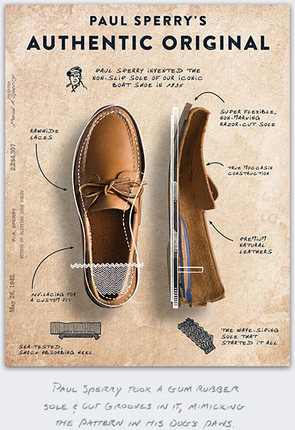
But how? In effect by finally shedding its inclusive shell and leaving the campus life for greener pastures upon the shoulders of the leading sartorial icons of the time: Messrs such as President John F. Kennedy, musician Miles Davis, and the genteel king of the silver-screen Cary Grant (amongst countless others).
To gather an idea of what the precise style of the time looked like I’d point you towards imagining the polished formal stylings of the Mad Men crew — of their quintessential grey and navy suiting and patterned leisurewear —mixed with that of classic Ivy Trad sportswear for an illustrated picture of the unquestionable elegance it personified. Thusly, this era of the style was to be defined by its more athletic cuts, slimmer collars/ties and its avant-garde styling of traditional essentials (Bass Weejuns, OCBD’s, navy blazers and the like).
Alas, all good things must come to an end and by the culmination of 1967 the Ivy League look had all but fallen by the wayside having been eventually replaced by what was essentially the first hybridized version of the classic look years later after it had been usurped by the bohemian leaning styling of the hippie set and the ("freeing") vibrant colour palette that was soon to take over in what was a dry spell for the look during the ‘70s.
And it was within this “in-between” period that the word “prep” first appeared in the popular lexicon alongside what is now known as the vibrantly hued, more ostentatiously stylized modern version of prep that most are accustomed to these days. A styling , as it were, whose immediately inspiration came courtesy of not what was happening on the Ivy campus but rather from the brightly hued local stylings of denizens in such popular tropical prep vacation hotspots as Palm Beach.
To give an idea of just how the look had evolved during this “ passing on of the torch” period, just take into consideration what had been a typical ’60s Ivy outfit — chinos/khakis, penny loafers, knit, OCBD, and Varsity jacket — and place it alongside what had become the ’70s preppy outfit of choice — chinos/khakis, bit loafers, bright polo (with popped collar) and even more vibrant sweater. Subtle differentiating nuances to be certain, but ones that proved that the Ivy Trad look was indeed becoming a former shell of itself without question — even if some of the traditional underpinnings (i.e. chinos/khakis, OCBDs, loafers) remained in tact..
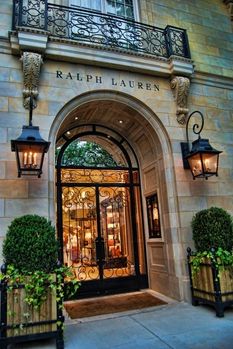 Vintage Ralph Lauren Storefront
Vintage Ralph Lauren Storefront
Of particular note within this period was (first) the publication of the ever-popular (to this day) New-York Times bestselling guide to the style "The Preppy Handbook” in 1980 and (second) the rise of relatively new upstart brands such as J Crew, Tommy Hilfiger, and Ralph Lauren (who had previously developed a penchant for the Ivy style and earned his stripes working for Brooks Brothers), the latter of which launched a captivating, successful narrative driven marketing campaign illustrating the American Dream as one connotatively (and solely) stylized in its preppy clothing. It became an instant hit, something that was such a success that it is still played out in the near same manner today as it was then.
At its core, this new form of Ivy-prep focused more on the upper crest lifestyle offshoots of Trad Ivy then on campus life, with nautical, equestrian , and Gastby-esque pastel inspired collections being of peculiar significance. By this point in time the look was now all about chasing after the ideal existence and mass consumption and less about living a stylishly humble life in the shadows. It was a changing of the guards so to speak, one whose flashy draw quickly won over any and all who were fascinated by the romantic nostalgia it sold and the imparted class and elegance that the look (supposedly) promised to deliver to any who now adopted it.
And at that we arrive in the modern day.
In truth, some would be quick to point out that It’s due to this nostalgic and impressionable reimagining of the aesthetics — alongside the strong “American Dream” narrative driven advertising campaigns — that the prep culture and style as well know it still persists to this day…and they would not be wrong.
In that respect, the original Ivy League Look — and every manifestation of it to follow — has always been as much about personal styling as it has been about wearing the key wardrobe ingredients. And while the signature ingredients have been relatively fixed since the styles inception, there have been small changes here and there brought slowly to the fore by those who admittedly lived out the lifestyle — whether on campus, vacation, or professionally — in a gradual state of generational flux.
From the Trad businessman (and his shapeless sack suits) and the forever immortalized — in F. Scott Fitzgerald’s (who happened to be a prominent ivy-leaguer himself) literary masterpiece, “ The Great Gatsby” — Gatsby WASP set (and their pork pies, D.B. blazers and white ducks) to the more traditional country and sporting heritage staples of the Ivy League look that more closely personify the authentic styling proclivities of those frolicking about campus or the second (summer vacation) home, the ivy-prep look has always managed to inspire whilst admirably bridging the gap between the leisure and professional worlds in utter style. As such, it will forever be a cohesively dishevelled style inspirationally torn and frozen between town, campus, country, and beach.
That said, the Ivy-prep look is one truly for the ages and ageless, a style that is perpetually in vogue in one form or another; a reassuring, static look that can carry you through most anything in life and a veritable safe haven of sorts that will always hold a place of permanent relevance in the timeless pantheon of menswear lore due to the fact that the essentials of the look continually evolve in fit and styling (to best suit each successive generation) but always remain the same in merited form and function.
To this day it is continually earmarked as one of the few enduring legacy style’s in fashion in addition to being the stylish embodiment of the iconic American Dream and the standard barometer of tastefully conservative dress for gentlemen the world round.
Ivy-prep: it is a style that is simply not going anywhere but can take you everywhere.
Anchored by British heritage wears while being underscored by an adherence to a Draconian code of uniformed prep-school formality, it is simply a bastion of refined simplicity that is casual in spirit yet neatly refined in its overall appearance; a modernly sensible style of dress whose continued evolution of fit, enduring nature, and classic form have made it quintessentially all-American at its heart.
Full of character and purposefully nonchalant in their approach to style, preps have a peculiar penchant for fine tailoring and heritage quality production that actively marries casual sportswear and formal attire in a most charming and becoming manner — into a proper style that allows them to live a good (stylish + honourable) life in the shadows.
Forever cemented into the gilded pantheon of menswear lore, the preppy set have always been unwilling to defer to the whimsical tides of fashion due to the belief that if isn’t broken, then don’t try to fix it (but if it falls apart you surely should). It is an indoctrinating style whose enduring longevity and influential power rests upon the characteristic self-discipline of its modern custodians (which is far cry from its traditionally institutionalized past) who have carried it over from one generation to the next without fail and always in its optimal form.
Aesthetically speaking, the Ivy-prep look has become as vibrantly hued (see: YPG) as it is muted (greys, browns, whites) in its definitive colour palette whilst still putting emphasis and relying upon heritage patterns (plaids, madras, Fair Isle, Breton-stripes, argyle), textures and embroidered motifs as a means to liven up its core essentials. As such, it is a simple, inviting approach to understated styling that is sure to please the senses in one way or another — whether it be in being visually intrigued by its streamlined styling and the preppy mastery of seasonal layering (base layers of cotton working up to wools and tweeds) or that of being drawn in by its inviting to the touch plush sweaters (see: Shetland/Shaggy Dog sweater) and contrast textured garments.
To that avail, one could say that Ivy-preps of all shapes, sizes and ages exhibit what appears to be an innate taste for vibrant pastels (i.e. Nantucket reds), patchwork plaid madras, stripes and lightweight fabrics (cotton, madras, seersucker) in the warmer months and dark primary colours fashioned upon hardwearing utilitarian staples that are crafted in insulating textiles (tweed, wool, corduroy) come the dawn of autumn and winter. That is to say that it is a well-rounded, all-season, universally acceptable form of dress of the highest order
|
with devotees who approach it without any distasteful posturing in hand and with a fastidious attention to detail that is astounding, For you see, the Ivy-prep persona demands of a gent that he provide his clothes with character and not the inverse — that a mans clothes should never upstage him in any manner.
In that vein, and contrary to popular belief, most truly preppy people actively shun the limelight, which is something that is at the heart of the traditional underlying styling ethos. They also don’t worry about ‘fashion’ like most others tend to – of what trends are dominating the runway or what form of bomber or dress shirt is “in” this year – and rely instead on buying the same pieces that they know work and and wear them until their end of days. |
Do not get me wrong, preps indeed care, but they do not go out of their way to just to prove that they do. They are classy yet casual, being taught from a young age that comfort need not only mean joggers and a t-shirt, and that getting dressed up has nothing to do with fashion.
Essentially, the Ivy-prep style comes down to being one that is a creative mixture of properly tailored utilitarian goods and a confident personal disposition that both actively pay homage to the many gentlemanly pursuits that make up a preps life: pastimes such as tennis, sailing/yachting, equestrianism, shooting (hunting), lacrosse and golf (to name but a few). It is casual refinement with a touch of class and emotional identity at its finest.
As such, the quintessential Ivy-Prep wardrobe is one that is distinctly positioned between many intersecting worlds (as mentioned above in the history): the collegiate campus life, the country club, sailing/beach, the country heritage Englishman, and of that of the formal American business world. It is purely American at its heart to be sure, albeit one with various component strands (and foreign influences) that have managed to tastefully coalesce into an enduring sartorial entity that authentically reflects upon a man who is stylishly torn between what can be edited down to two competing worlds — town (urban/campus) vs. country (sporting heritage/sailing/beach).
And that is where most who endeavour to adopting the look tend to lead themselves astray as many view preppy style as being either solely earmarked for the summer months (read: chinos, polos, etc.) or rather (and worse yet) for being crassly loud, commanding, and ostentatiously stylized (read: the neo-prep look).
|
On the contrary, true Ivy-prep style could not be anything further from either distinction as it rather encapsulates a more broad and calculated (albeit aloof) approach that caters to all four seasons whilst marrying both the business and informal components of an age old lifestyle and its tactical necessities into one highly stylized and versatile wardrobe whose merits and ease of wear have ensured it endures in popularity to this day — think sports inspired campus wears, regimented prefatory uniformity, vintage heritage country attire, modern nautical/sailing essentialism, and understated Ivy business formality (read: the grey "Mad Men" business man look).
|
All that said, the Ivy-prep look is essentially one that will always be marked in function and purpose by the distinct requirements of dress that inevitably come with each successive chapter of a mans life. From his formative years at prefatory schools and in the Ivy League right into his professional career spent in the city and his golden years at the (country) club, and from summering spots like Nantucket through autumn duck hunting retreats in Maine, preps have always had specialized capsule wardrobes for each component and decade of their lives…and each features the same interchange pieces as the last ad verbatim.
And it is that transitional versatility — in conjunction with its timeless-yet-fashionable elegance — that sets it apart from more fleeting trends. It a form of dress that keeps a man perpetually youthful, his choice attire simply impeachable, and its versatility unmatched. In essence, it's the ideal beginners guide to fashion.
For example, all one must do is consider its hallmark turnstile of tweed sports coats, navy blazers, repp ties, chinos, grey flannel trousers, Breton-striped knitwear…all pieces seething with cultural cachet and endearing merit that have transcended the vicissitudes of fashion and underscore precisely why the preppy wardrobe now embodies the pinnacle of casual elegance — it is simply an embarrassment of sartorial riches whose universal appeal has rendered them synonymous with good taste and truly timeless style.
Be that as it may, how do you set yourself apart in such a highly regimented and uniformed style of dress?
The answer, I believe, lies in the nuances of wear and subtle differences in styling. Insomuch as that, my advice is to dress up rakishly by wearing each staple (many of which were extensively illustrated above) in an unexpected manner or rather yet to turn to your accessories to craft one-of-a-kind looks. For the latter I’d advise playing with different variations of NATO-straped watches, adopting a unique pair of tortoiseshell sunglasses or paisley scarf, finding a tactile knit sweater and wearing it with everything,, considering switching up your seasonal formalwear, or even experimenting with the manner in which you layer your clothing (no matter the season at hand).
The rest, naturally, comes down to ones strength of character and unique sartorial aplomb; of appearing completely at ease in your choice of attire, comfortable in your skin, confident in your disposition, and uncompromising in the nature of how you choose to dress. The traditional Ivy aesthetic is, as has been said, about always being characteristically forthcoming about your intent through that of your choice personal styling.
Distinguished yet approachable and an ease to pull off, it does not take any considerable effort on your part to adopt and dress well in a predominantly Ivy-prep manner seeing as many of its hallmarks have managed to effortlessly ingratiate themselves into the everyday wardrobes of nearly every sort of gentleman — it is arguably a democratic spectre of style fit for one-and-all.
Nevertheless, and upon further inspection, it is quite a varied style whose influences and champions are aplenty, whether it be the head-to-toe Brooks Brothers/ J. Press trad Ivy Leaguer; the ‘20s inspired Gatsbian WASP; the polo prep country heritage traditionalist replete in his Ralph Lauren tweeds and flannels; the flashy, garden variety of mass-marketed neo-prep in his Vineyard Vines; or even the in-between gent who sports a mixture of vintage thrifted wears and contemporary J. Crew O.C.B.D's…the Ivy-prep styling options have become as near extensive as the history behind the subculture itself.
So, as long as you own the signature pieces of the style (outlined above) you will be able to wear them in any capacity or manner that you should see fit. And that, in particular, is where the true magic of the look resides: in its endearing timelessness, versatility, and its tastefully reliable functionality (i.e. the closest thing to a paint-by-the-numbers style you will ever cross paths with).
It is a venerable style that is acceptable most any place, in any walk of life, and anywhere in the world. From the tennis courts to the board room and from the summer beach house (in the Vineyard) to the rustic hunting Lodge in Maine. A style that will see you through this season and the next…and every one to follow that
Simple. Effortless. Elegant. Charming. Versatile. Comfortable…the Ivy-prep aesthetic is unfailingly stylish & reliable.
|
The prep and sailing (style), it is an age old cultural marriage that is deeply ingrained in the public consciousness whose modern history is so synonymously intertwined that one could say that most preps are innately borne with a natural affinity for sailing and wearing its tastefully utilitarian nautical wardrobe accompaniments.
Insofar as such, and inherently tied to summer, is the preppy penchant for seeing out the season in locales such as Nantucket, Montauk, and Martha’s Vineyard, all East Coast bastions of prepdom in which the classic Ivy nautical look was arguably founded and further nurtured within until reaching its pinnacle form in which persists in popularity this day. Be that as it may, what pieces have come to embody the the preppy nautical spirit and how do they wear them? Think boat shoes, chinos, polos, patchwork madras Bermuda shorts, Ray-Bans, cable-knit (Aran) jumpers and Breton-stripe sweaters (to name but an obvious few) and wear them however you see fit as all have become instrumental cogs that have respectively anchored the wardrobes of many an Ivy Trad and modern prep alike throughout history. Need more? Well, it could just as well be whites ducks (summer trousers), D.B. navy yachting blazers, needlepoint belts, pocket crewneck t-shirts, or even waterproof driving loafers (Tod’s) that tickle your preppy-inspired nautical fancy. |
|
Universally forgiving (on all men of all walks of life), elegantly understated, widely accepted and and sartorially versatile in its easy-wearing nature, the profoundly formal and smart wardrobe of the bygone Ivy League WASP is to the prep what water is to human survival: essential.
So, what did they wear? Well, all one would need to do is call to mind what most now hail as being timeless prep staples: solid grey flannel suits (think Mad Men) and all-white tennis garb, trench coats and regimented collegiate-crested navy blazers, black tie tuxes and Shetland sweaters (you name it). Moreover, WASPs were also the visionary masterminds behind smart-casual separate dressing (i.e. double-breasted plaid blazers with white tropical cotton trousers and spectator shoes) and of cuffing ones trousers, both of which in turn effectively launched (by the end of their sartorial rein in 1967) what has now come full circle as the casual sportswear movement. They were both creator and custodian of the original Ivy League look, providing the ideal (i.e. isolated) locale and breeding ground for proper sartorial gestation to manifest itself before it influentially dispersed and enraptured the young (and old) minds of an entire nation on route to becoming the symbolic sartorial identity for what was then the world’s emerging superpower. And as a well-documented history illustrates, WASP (trad) Ivy League style is now widely regarded and renowned as being the de facto, unsanctioned national fashion aesthetic of the U.S.A. |
|
Focusing on simple, approachable essentials that typically eschew any gaudy branding, overzealous pairings of pattern, or unnatural fabrication in favour of those that are plainly styled with pared-back detailing, textured contrasts (that add visual character) and distinctive personalization (i.e. monograms), the classic Ivy-Collegiate ideal of campus dress was one defined by both an insouciant approach to dress that could be found in its pioneering form of smart-casual formality as well as its focus on luxury sportswear. In that regard, it now holds the gilded position of being the sartorial standard for the way a gentleman should aspire to dress when pursuing a higher education.
From varsity jackets and letterman crewneck sweaters through navy blazers, penny loafers, OCBD's, madras shorts and chinos, the staples of this peculiar branch of preppy style have effectively been set in stone for decades due to a (what may now seem Draconian) strictly regimented prefatory dress code that renders you well aware of its versatile nature and well documented styling capabilities — of which there is no room for the inclusion of anything over the top, outrageous or otherwise distasteful or inaccessible. It is, in essence and wear, an aesthetic that one and all can relate to; an understated form of casual elegance whose varsity sport-leaning proclivities have become synonymous with the collegiate life itself. Veritas, indeed! |
|
From autumn apple picks through hunting lodge excursions and unspoilt hikes through the Adirondacks, Ivy-preps certainly know how to lively life in the wild that is stylishly encased in hefty country fabrics, vintage heritage wears, and transitional outerwear that is ideal for not only those tricky in-between seasons but both town and country.
If truth be told, they long ago mastered the art of ruggedly tasteful seasonal layering: think quilted wax jackets sitting atop tweed blazers and shetland sweaters with chambray flannel shirts curiously peaking out from beneath (up top) alongside darkly hued corduroy trousers, leather belts and duck boots (down below) to gather an immediate illustration as to the functional yet undeniably stylish layered resplendence that is commonly put on display from any true practitioner of the look come autumn, winter, and spring. It is, consequently, the most hardwearing and practical yet handsomely charming (albeit often forgotten) branch of Ivy prepdom whose revered wardrobe foundation is replete with time-tested, ruggedly appealing English (British) country gentry wardrobe staples from the bygone days of yore. Innately utilitarian and marked by their enduring durability, lived-in feel, and hard-wearing nature, the ensembles (and pieces) that the preppy set fashion together for bucolic country life often bring to mind a pleasing, stylishly nostalgic vision of the great American outdoors — albeit one with English country gentry styling sensibilities at its core. |
|
Traditionally, preps do sport well and often.
Tennis (the sport of gentlemen), polo (the sport of kings), cricket, golf, lacrosse, rowing, fencing, croquet, skiing, equestrianism, hiking, shooting, fly-fishing…, preps routinely participate in what has become a well-cultivated ritualistic pastime of considered athletics and endeavour to always doing so in a stylishly chivalrous manner. Moreover, they covet exclusive membership in gentlemanly clubs,, dressing in their uniforms, and generally socializing amongst like-minded individuals. All points in which effectively ensure that the instantly identifiable preppy country club and sportswear aesthetic is not only alive and well but also deeply ingrained into their characteristically multi-faceted sartorial core. From crisp (near angelic) all-white tennis attire, polished rowing blazers and luxurious cricket sweaters through raglan-sleeved Collegiate knits, pique polos and canvas plimsolls, the (predominantly formal) sartorial heritage of the country club and sporting prep is as vast as it is richly stylized. |
What's of peculiar note, however, is the fact that despite having endured many a social upheaval, constant generational overturn, and an incessant barrage of trendy seasonal tastes in fashion, it has — at its core/basic wardrobe foundation — remained astutely fixed and unperturbed as both an inspiring beacon and polished barometer for refined American sartorial exceptionalism at its finest.
In that manner, I do believe that that the ever-evolving yet characteristically static preppy form of dress is one that has become (in the contemporary era) increasingly influenced, not by the descendent's of its once inclusive social “old money" (WASP) set, but rather by non-preps, average denizens and designers (such as Mr. Ralph Lauren) worldwide alike whose vastly variable individualistic interpretations therein of the hallmark preppy lifestyle components — leisurely pastimes/hobbies, vocations, the division of town and country life, etc. — profoundly effect how each one of us view the culture and aesthetic and choose to approach and conscript it into our service as we see fit.
Be that as it may, and whether you identify with but one peculiar preppy lifestyle element in particular or if you are of the ilk who has fashioned a look that tastefully reflects upon a characteristic amalgamation of them all, you should — as consequence of exploring this feature — be well-equipped with all the information necessary to make sensible styling choices in due course of crafting a preppy aesthetic that bespeaks unto your unique character and signature style.
And seeing as you will now be armed with a checklist detailing the interchangeable staples that have come to define the look, inspiration on how to tastefully style them in an array of transitional looks — from Ivy Trad through contemporary prep — to best suit your sartorial fancy, and a slew of styling tips + ad libs to top it off, I dare say all that may remain is to provide you with a few addition recommended resources (should you desire digging even deeper into the vast history of preppy style) and a style lookbook to spur you on and so forth…
|
Ivy. Ivy League. Prep. Preppy. Ivy-Prep. Trad. WASP. Collegiate…for the average gentleman who is considering adopting what is widely known by most today as the preppy look having an all-encompassing moniker that can reflectively embody every fluid manifestation of the style throughout its storied history is of little consequence. Contrarily, what is chief amongst our concerns is what the most recent (read: generational) interpretation thereof looks like and whether it deserves pride of place in our wardrobe (and signature aesthetic).
Be that as it may and in having long held our captive sartorial imaginations in complete thrall with its go-anywhere (and with everything) functional versatility, its understated elegance, and its enduring global appeal, it must be said that the Ivy-Prep form of dress has an endearing draw whose history is as storied and impressive as the prestigious Ivy-League institutions that gave birth to and nurtured it into the popular social consciousness. |
Japanese | British | Southern |
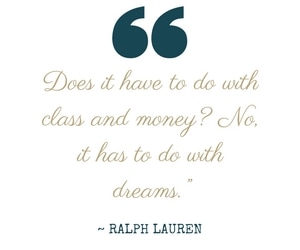
Arguably flattering upon mens of all ages and sizes whilst being widely accepted and immune to both the vicissitudes and vagaries of fashion and seasonal trends, the style has certainly evolved during its many years in the spotlight yet has continually managed to retain its quintessential identity — the signature pieces, the predominate smart-casual aesthetic, the nondescript styling — through thick-and-thin with the cultural foundation and philosophy the same and the underlying sartorial ethos intact.
Contemporarily speaking, the ivy-prep aesthetic now — courtesy of Mr. Ralph Lauren namely — perpetuates the notion that good taste should be available to anyone with the proper sensibility to truly appreciate it…and not exclusively to those borne and breed into its once niche circle of social elite.
That said, and in spite of the reality that the Ivy-prep style now undoubtably rests its once laureled crown in the democratic fashion domain, the core staples of the look (navy blazers, chinos, boat shoes , et al) remain static and unadulterated. What has changed, however, are the generational ideals of proper fit (Trads prefer a looser, free-flowing silhouette to that of the lithe modern interpretation), the manner in which we choose to style each individual piece, and a few structural alternations that were the result of innovations in fabrication — all of which have ensured the foundation staples of the style remain relevant in the modern wardrobing scope.
In that regard, for some it still immediately bespeaks unto an unquestionably innate level of class and prestige; and to others of the aspirational “American Dream” and the promise of a brighter future.
That being said, for most I believe it simply stands sartorially astute as a beacon of tastefully approachable style whose general ease of wear is dependable and capable of weathering any storm without fail.
Originally fashioned to "blend in", worn for its reassuring comfort, and invested in for its durably and heirloom quality, the Ivy-prep look (and lifestyle/culture) has had a profound influence on gents wardrobes the world round erstwhile pioneering and defining what is now regarded as the quintessential American sartorial identity — the style of a nation as it were.
Howbeit, preps elevated the navy blazer to new heights, pioneered the button-down shirt (i.e. OCBD), solidified the chino as an impeachable wardrobing staple, championed the polo (on this side of the pond), brought to the fore horn-rimmed (tortoiseshell) glasses and all-but invented both the formal separates dressing doctrine (ie. grey flannel trousers with navy blazers) and the modern casual sportswear movement — they have, to put it simply, democratized some of the most storied articles of clothing in menswear lore.
A gold standard in tastefully conservative sartorial minimalism as well as functional elegance, the Ivy-prep look is (as such) truly a timeless form of dress and endearing style whose appeal is broad, aesthetic universally flattering, and legacy forevermore cemented into sartorial lore.
Profoundly influential and ageless, the preppy wardrobe simply instils confidence and bespeaks of cultivated taste.
And to that effect, Ivy-prep is, always has been, and will always remain to be a widely accepted and tastefully sophisticated form of dress for any gentleman of style and substance to adopt!
|
|
Share your thoughts, musings and opinions…
Share below or feel free to reach out on twitter…
ENJOYED THE READ? YOU MAY ALSO LIKE:
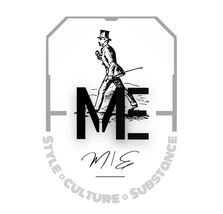
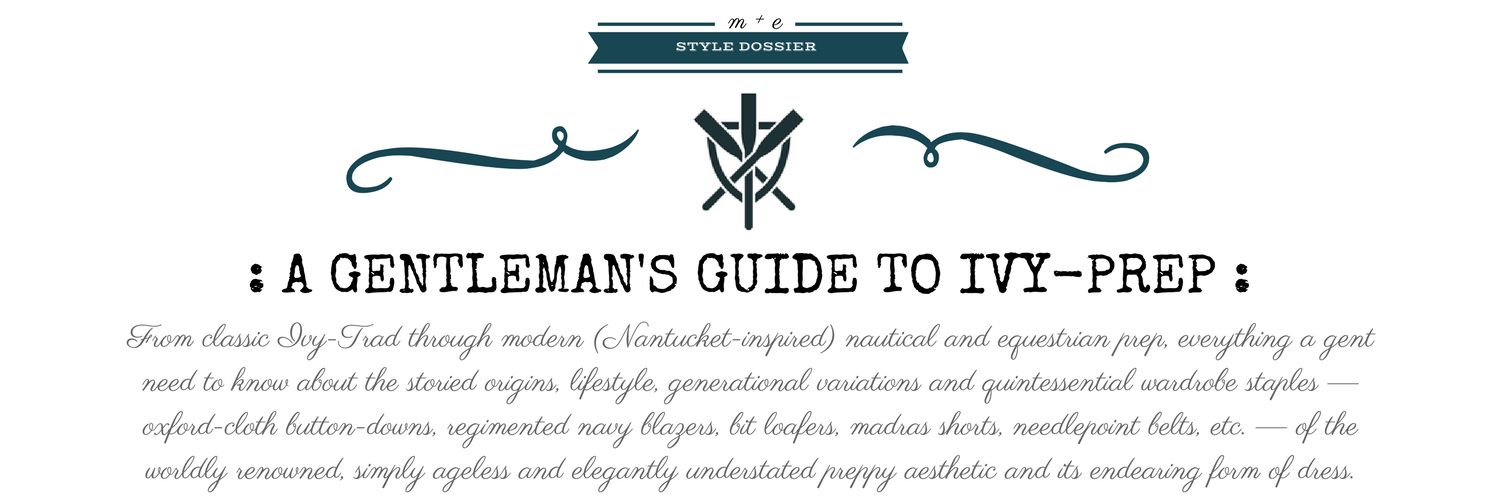
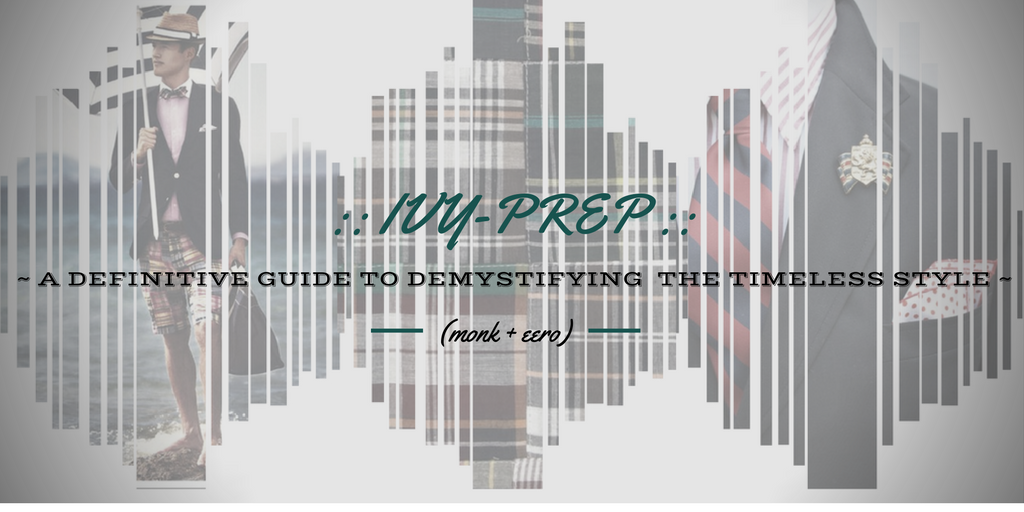





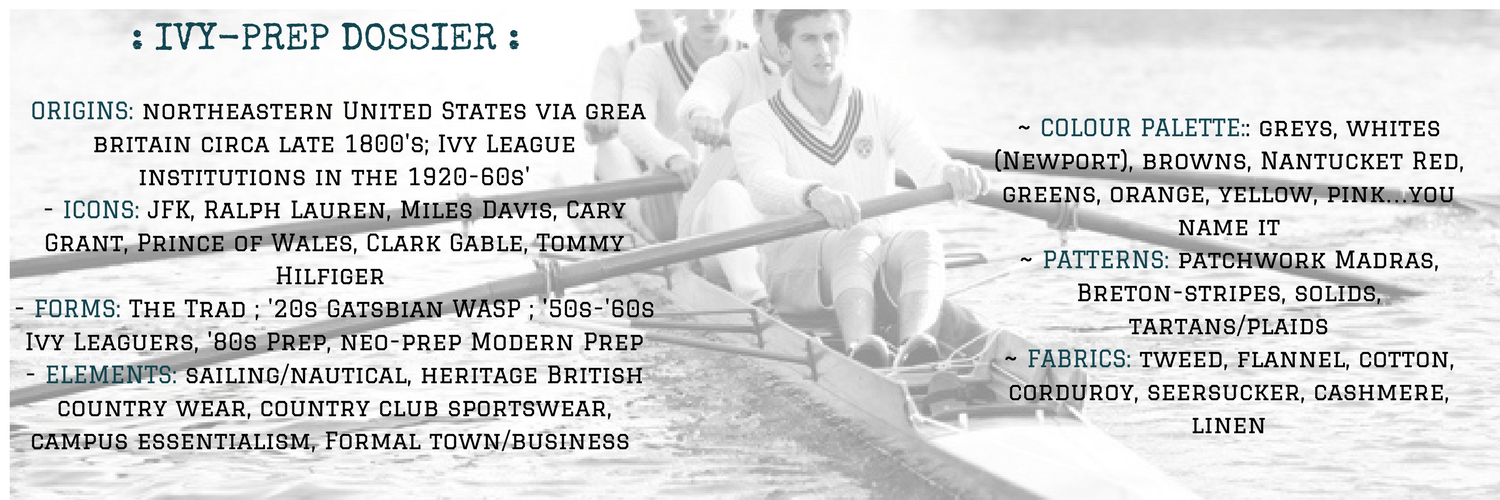
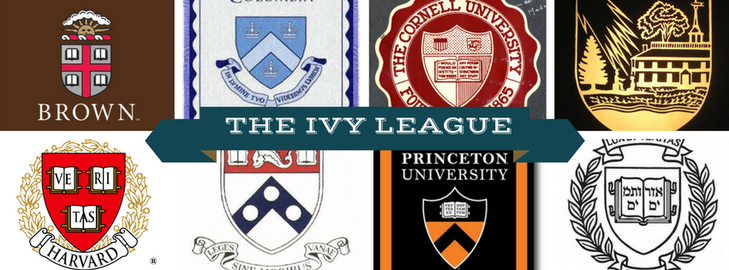



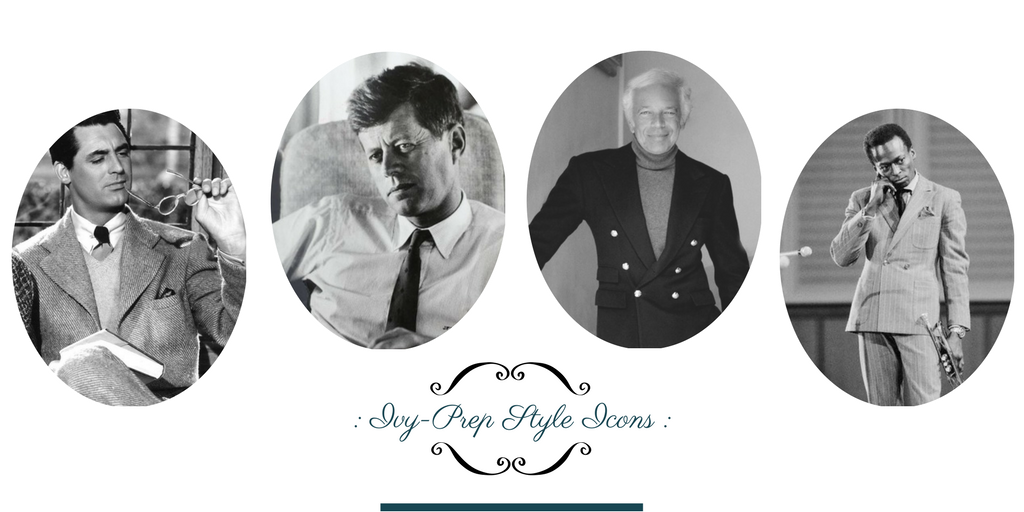








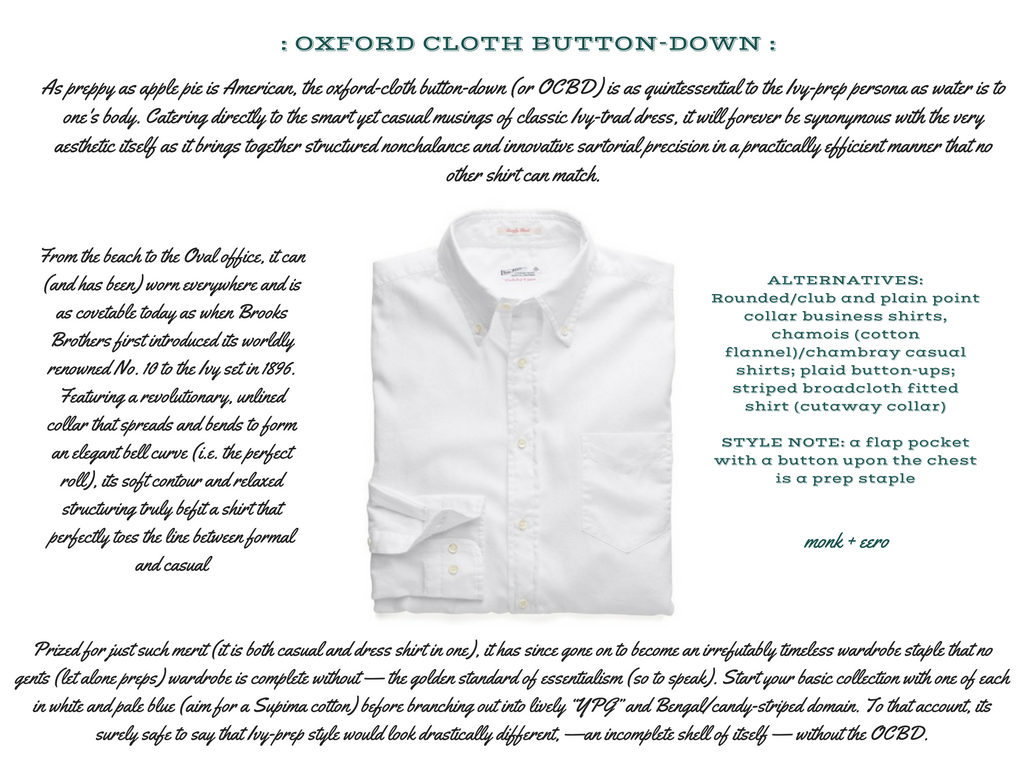
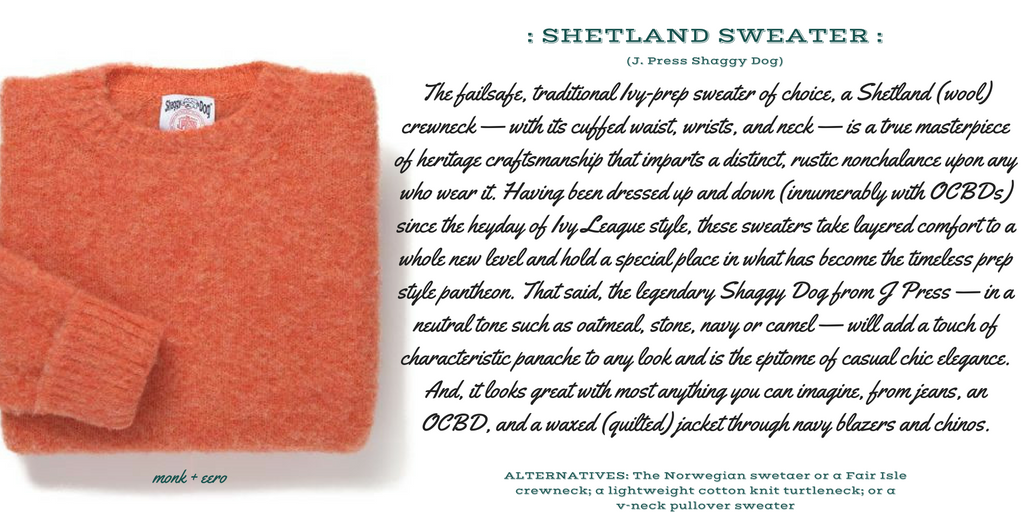
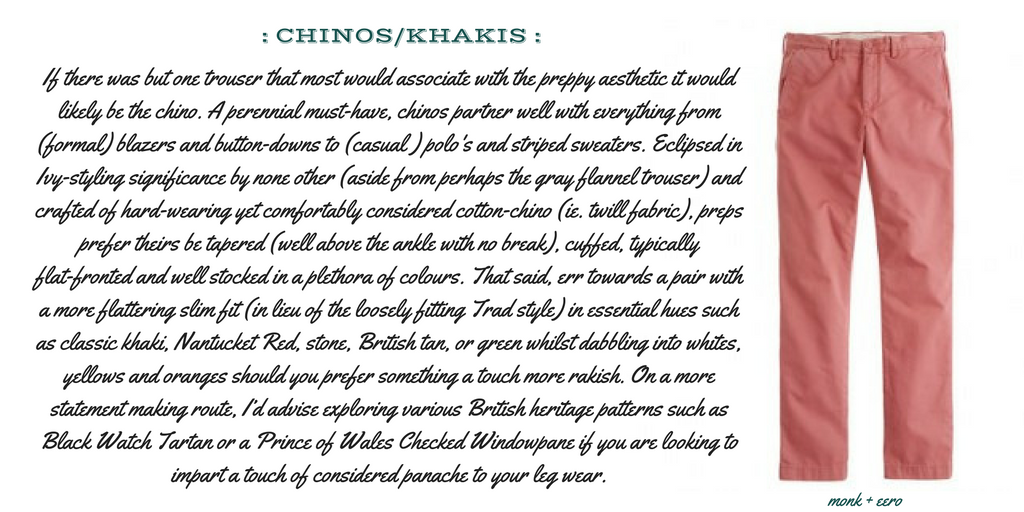
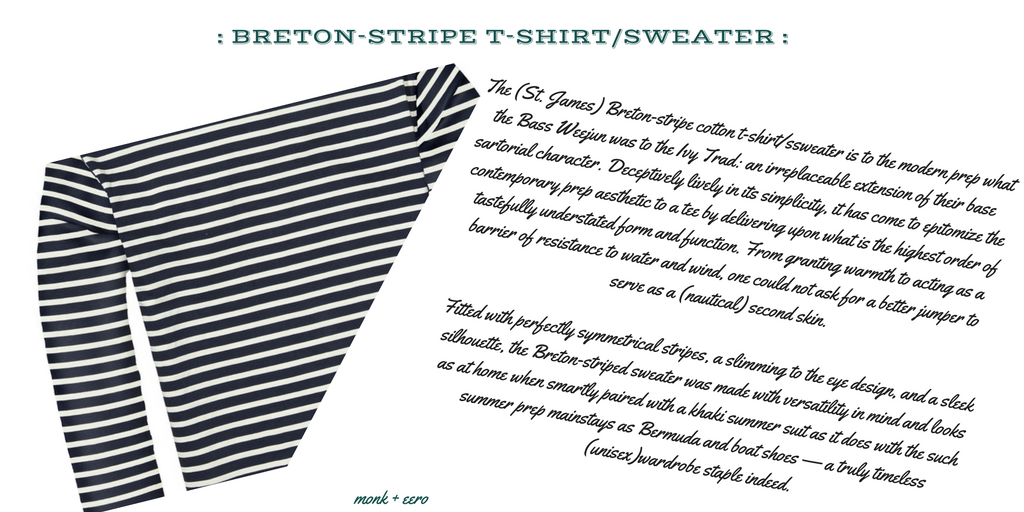
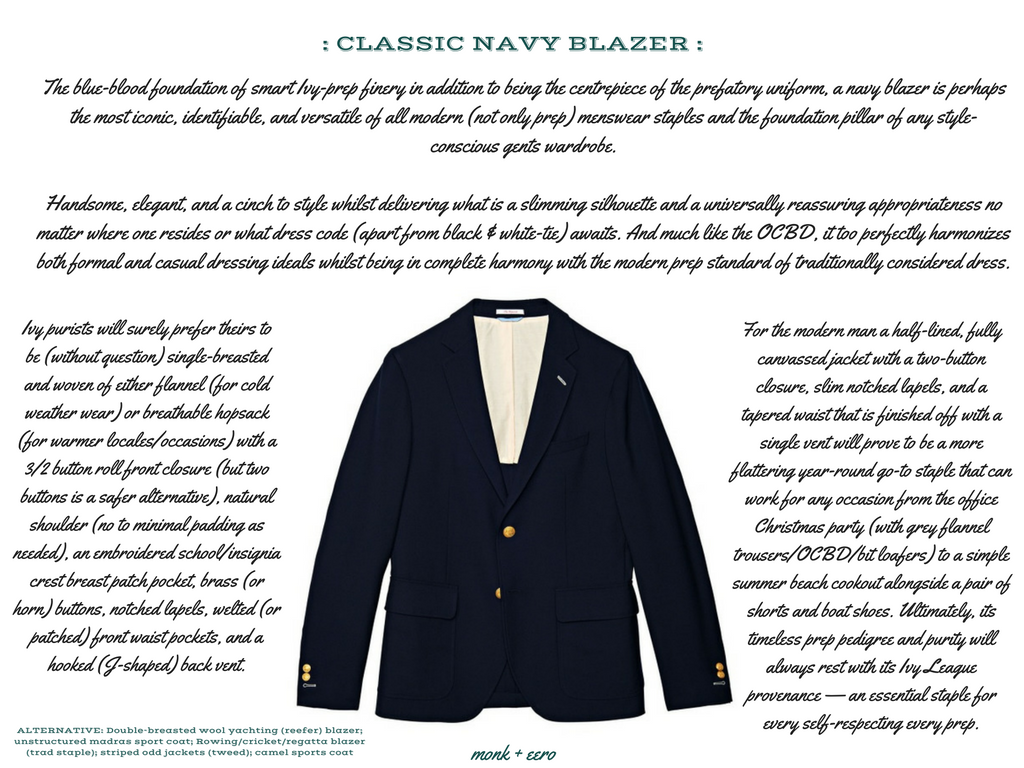
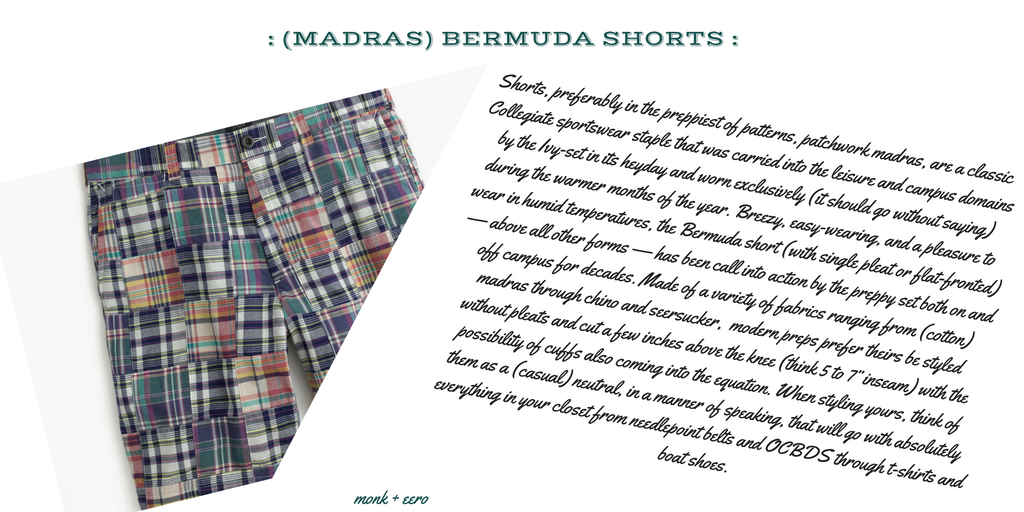
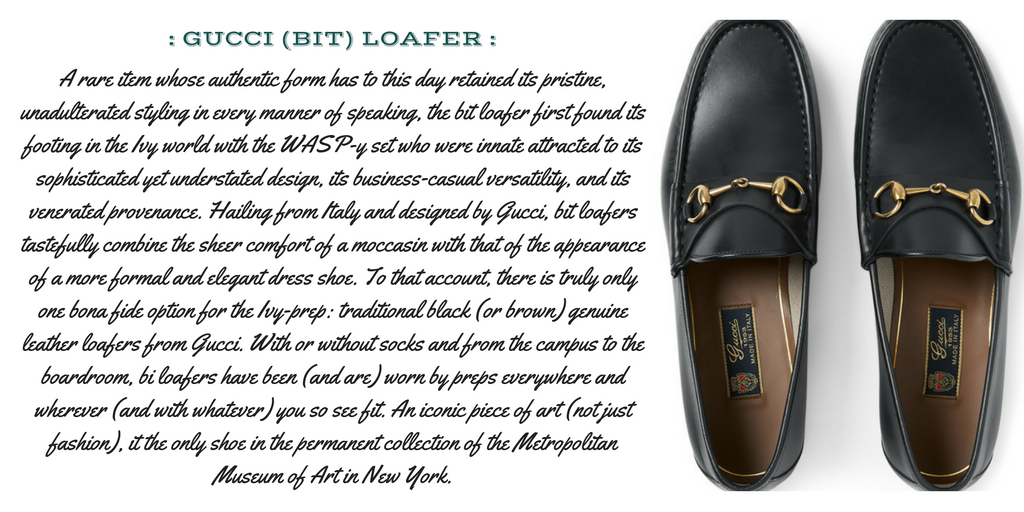
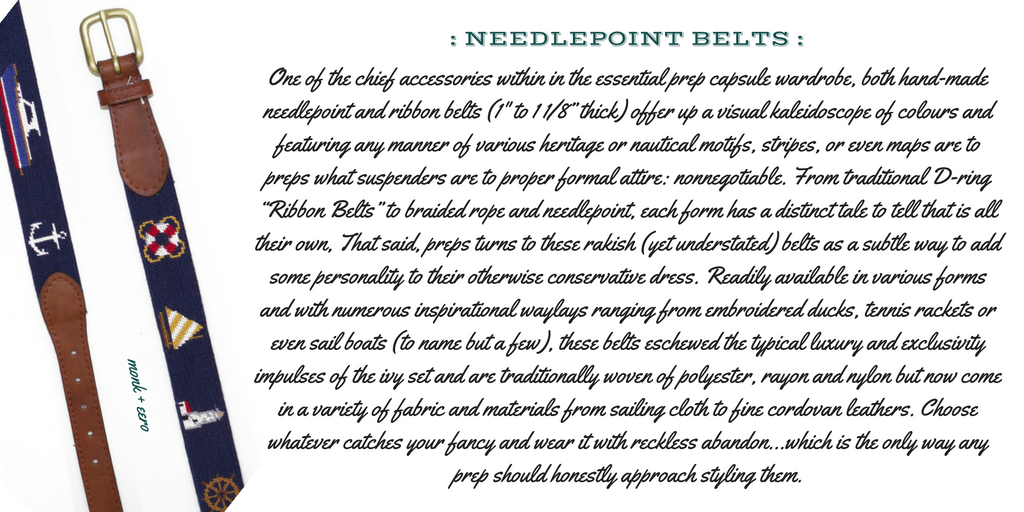
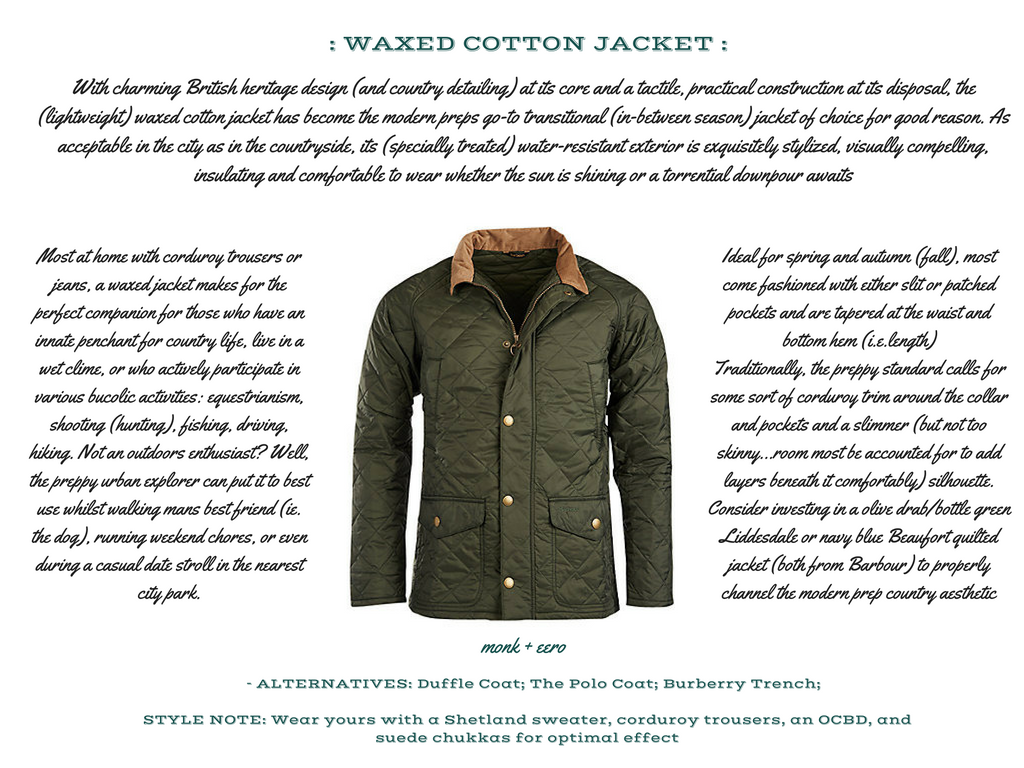
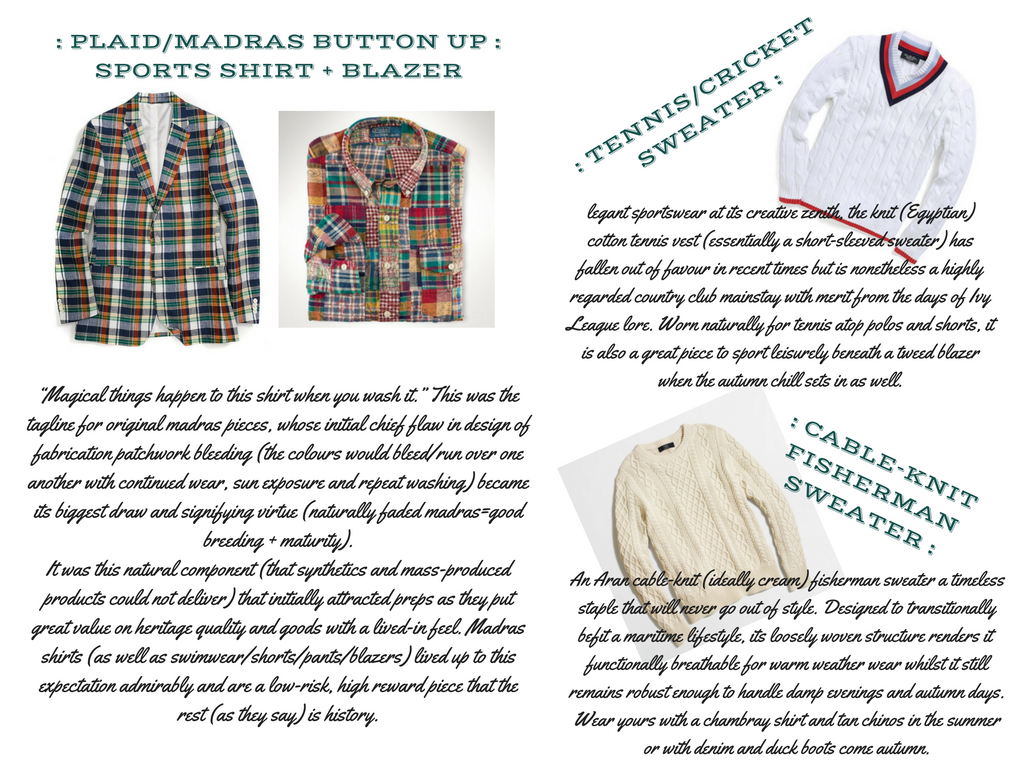
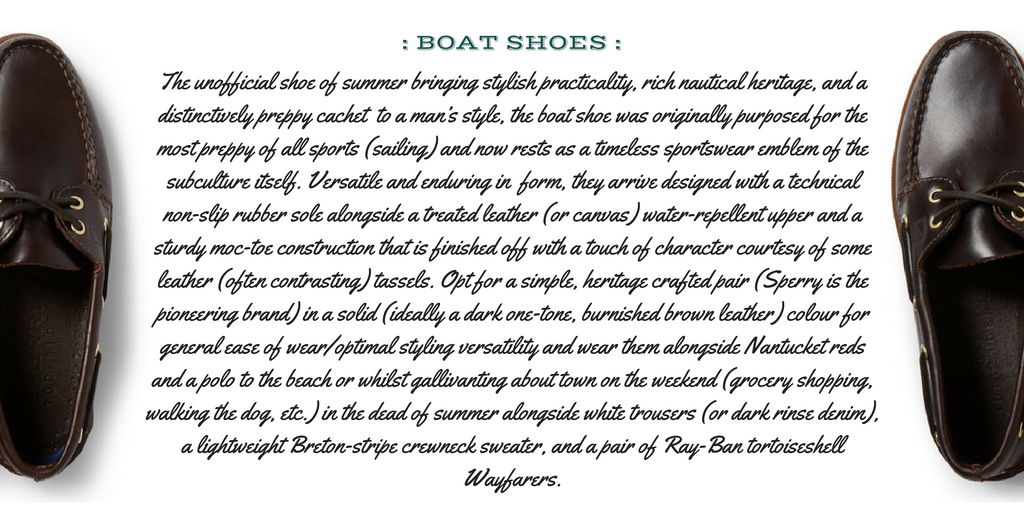

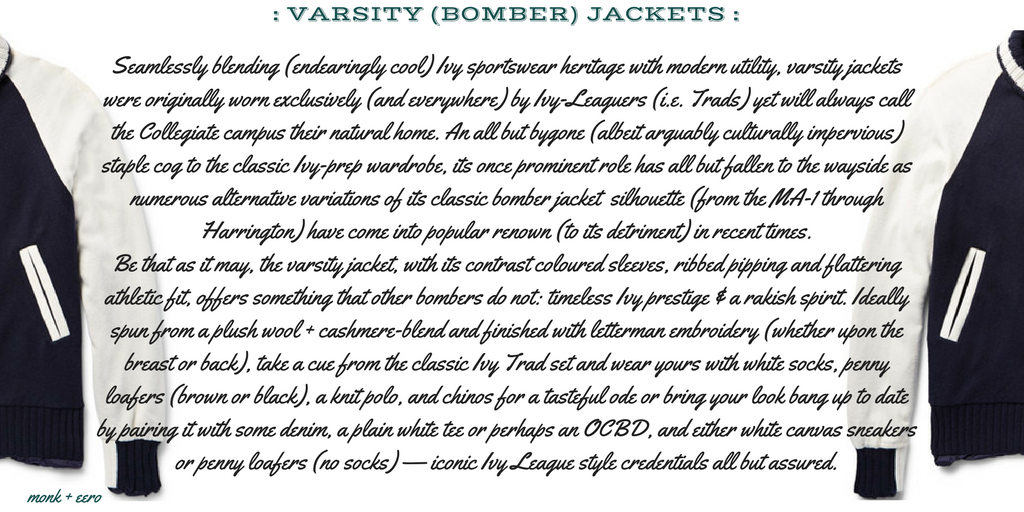
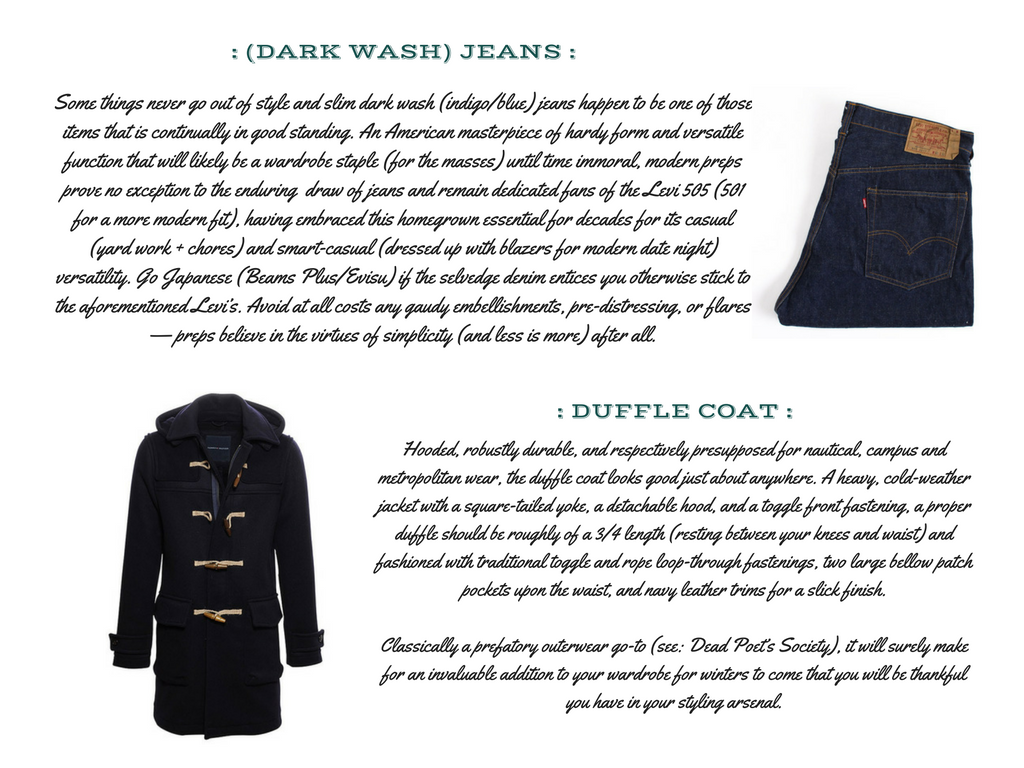
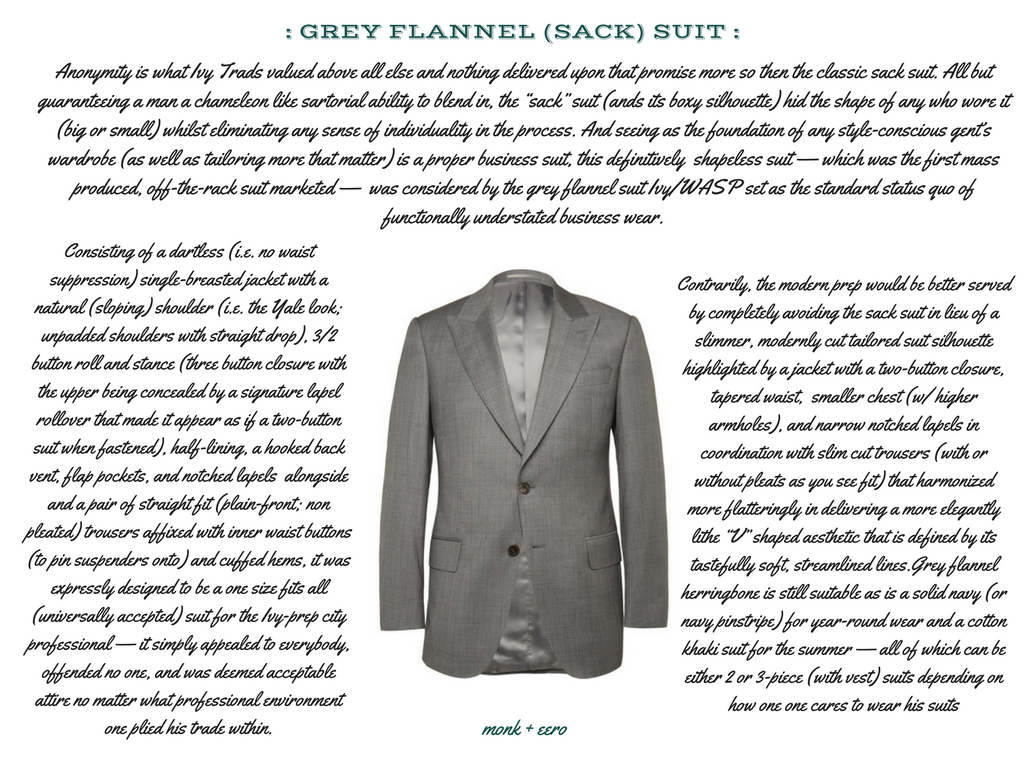
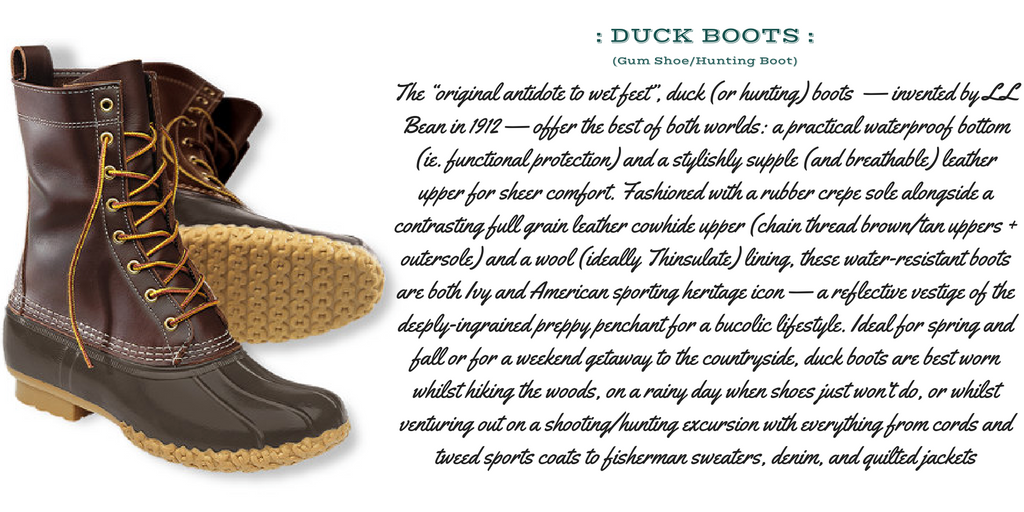
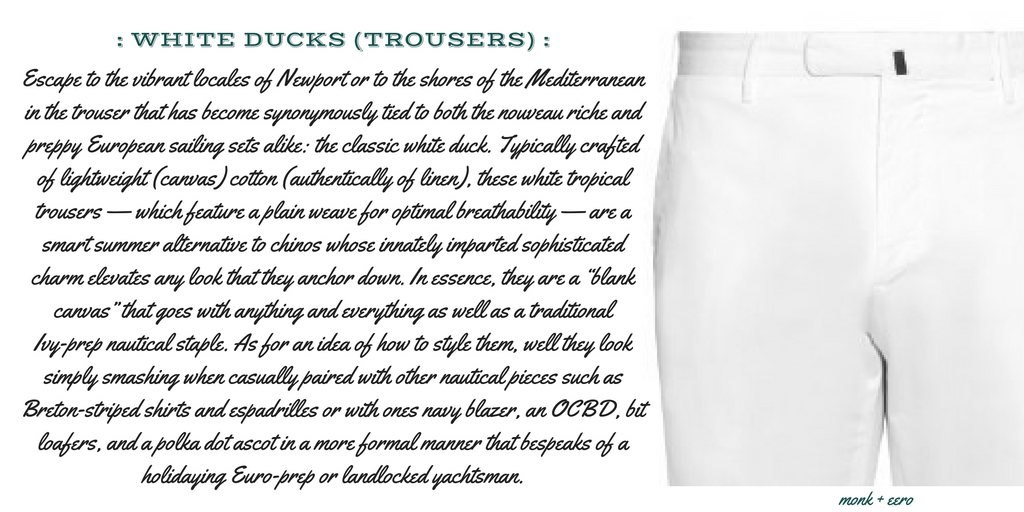
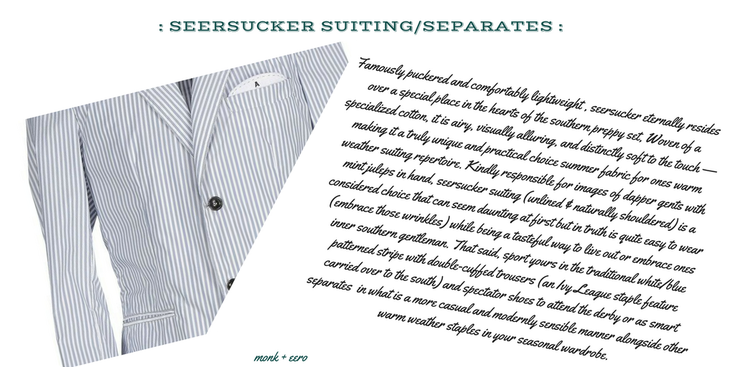
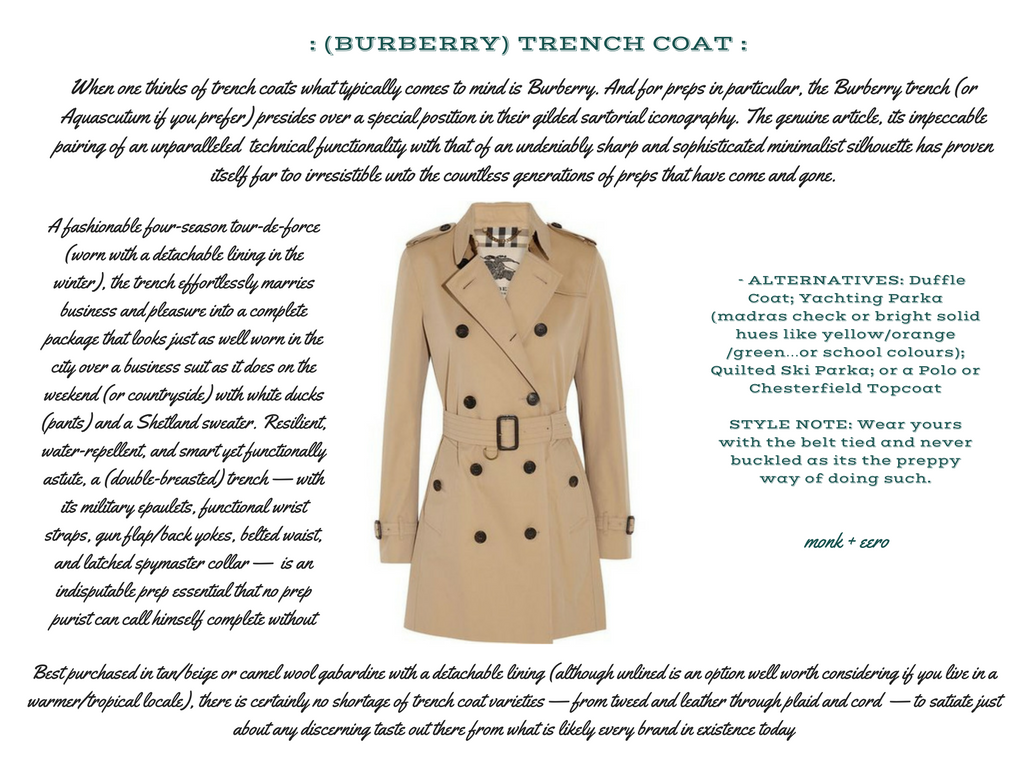
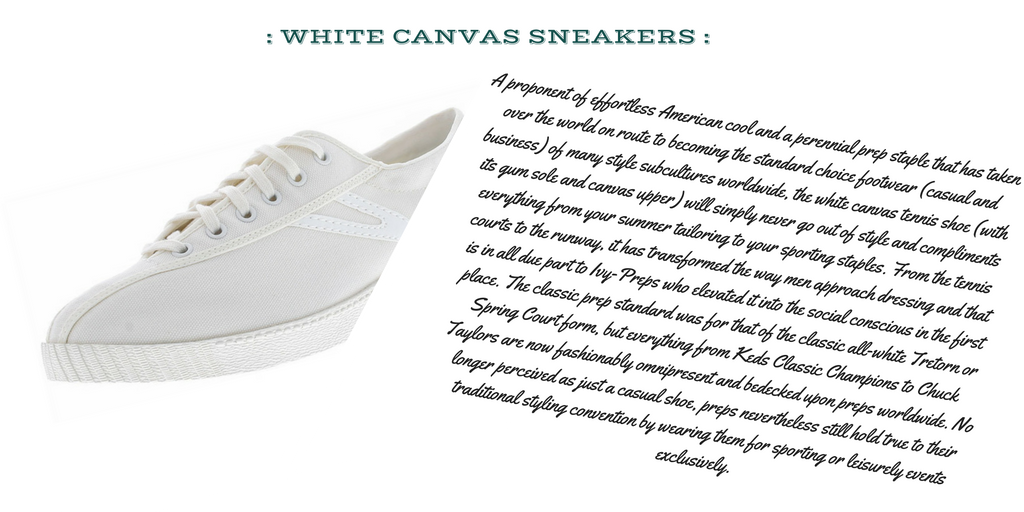
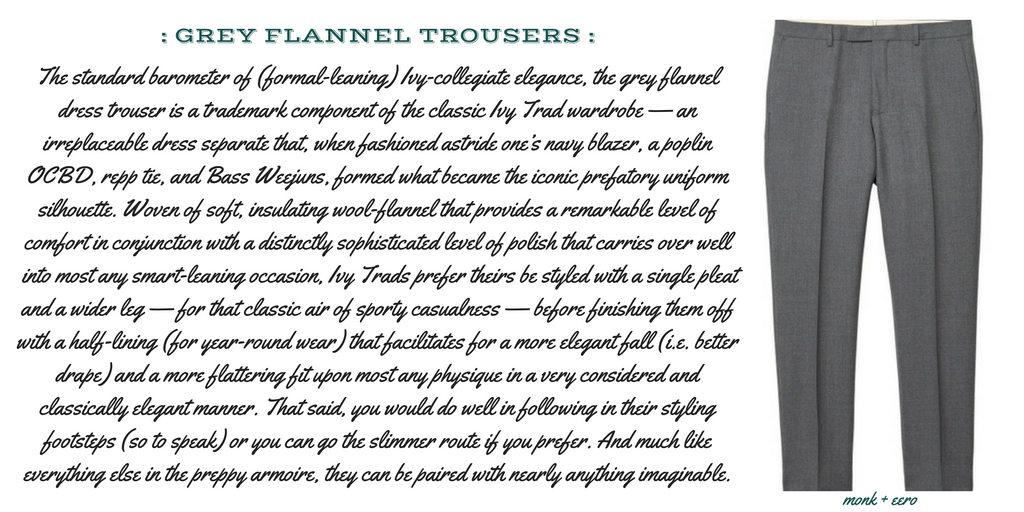
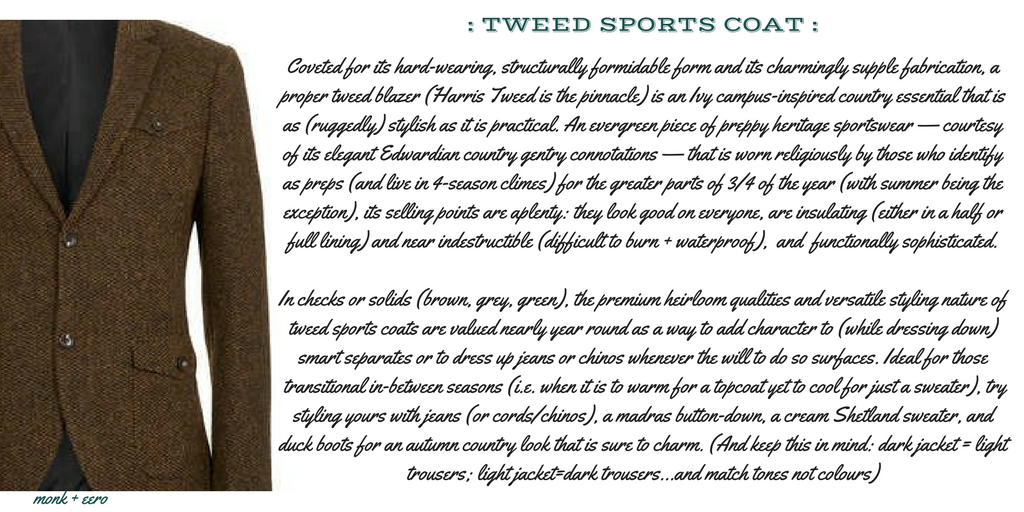
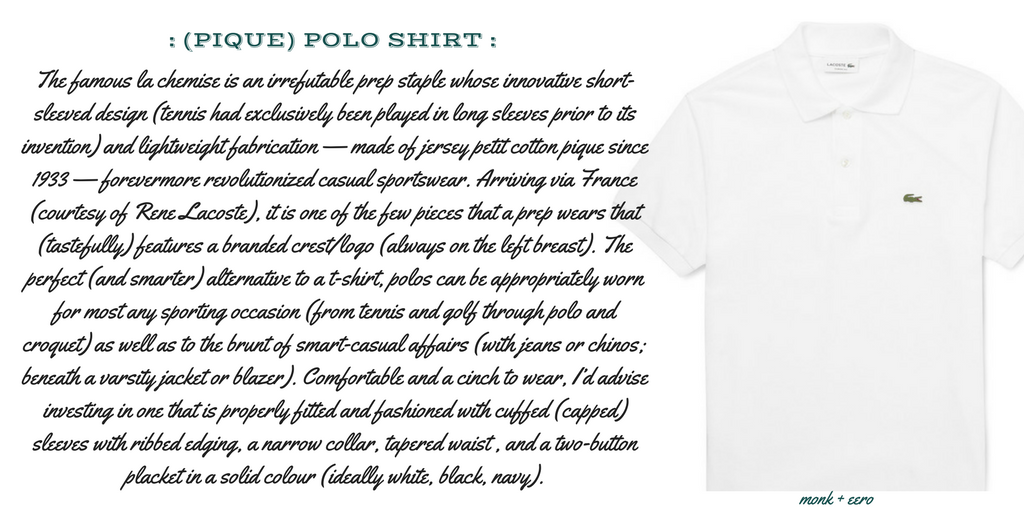
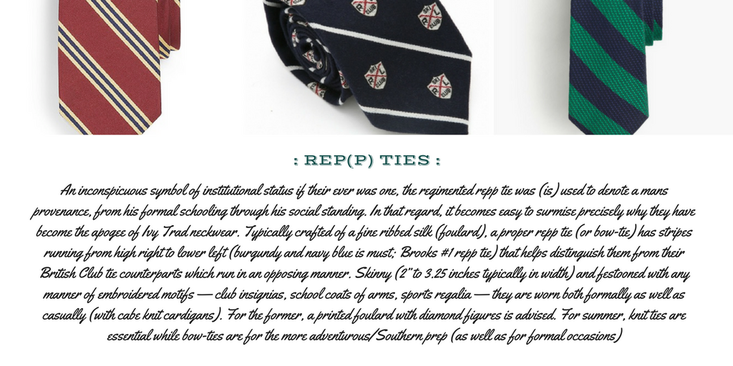


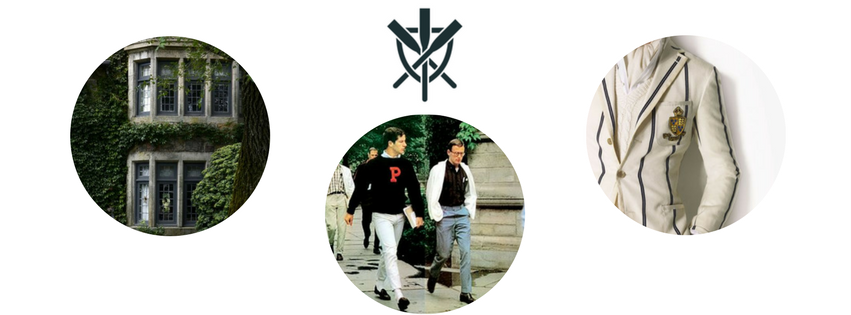
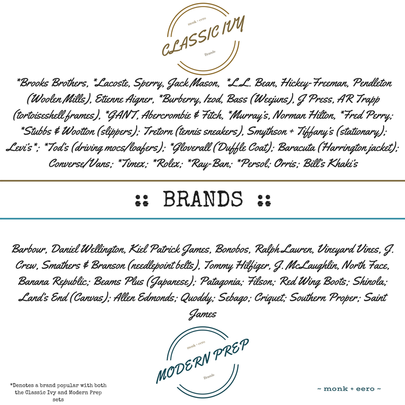

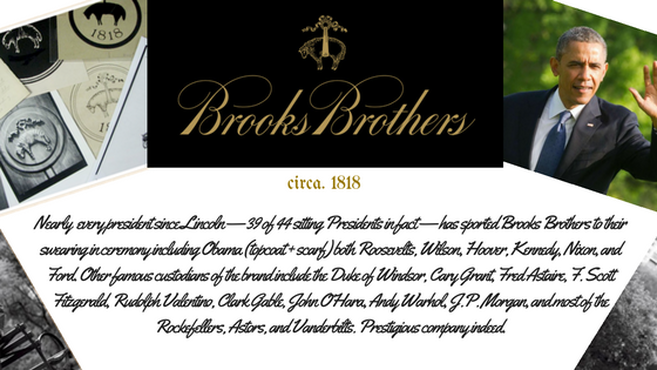
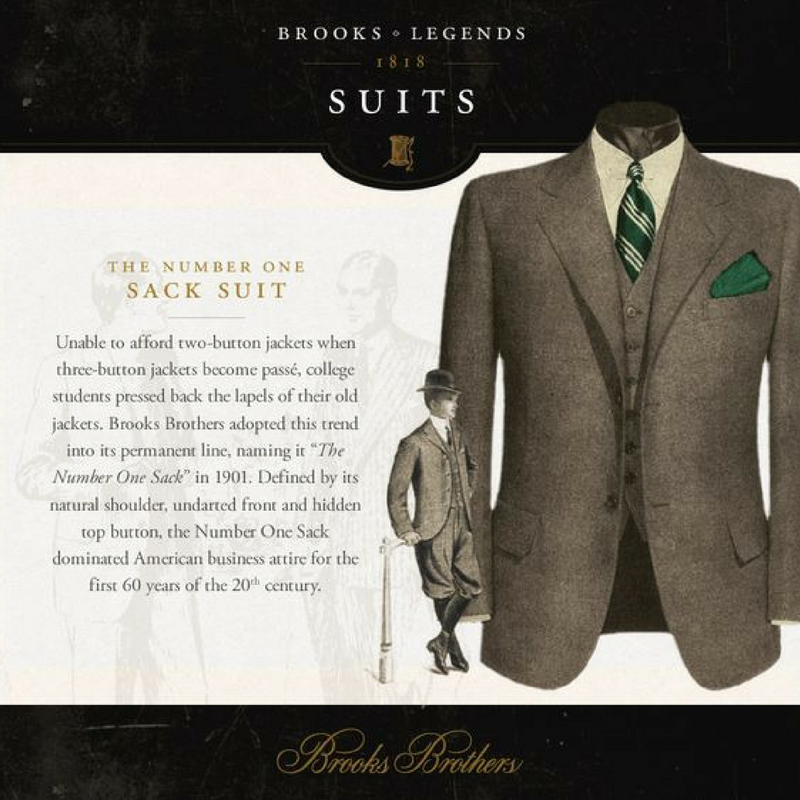
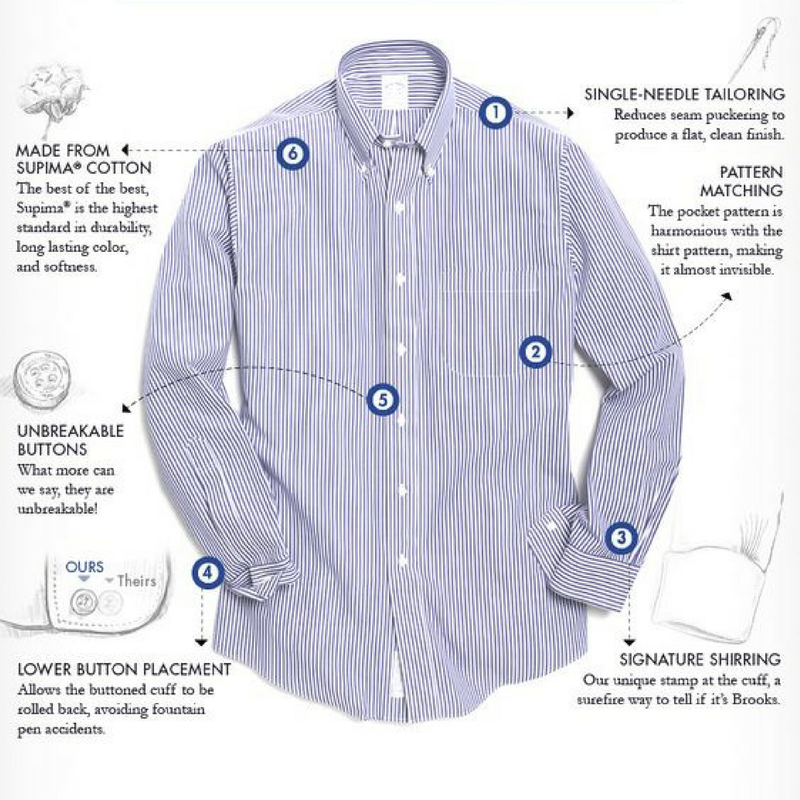
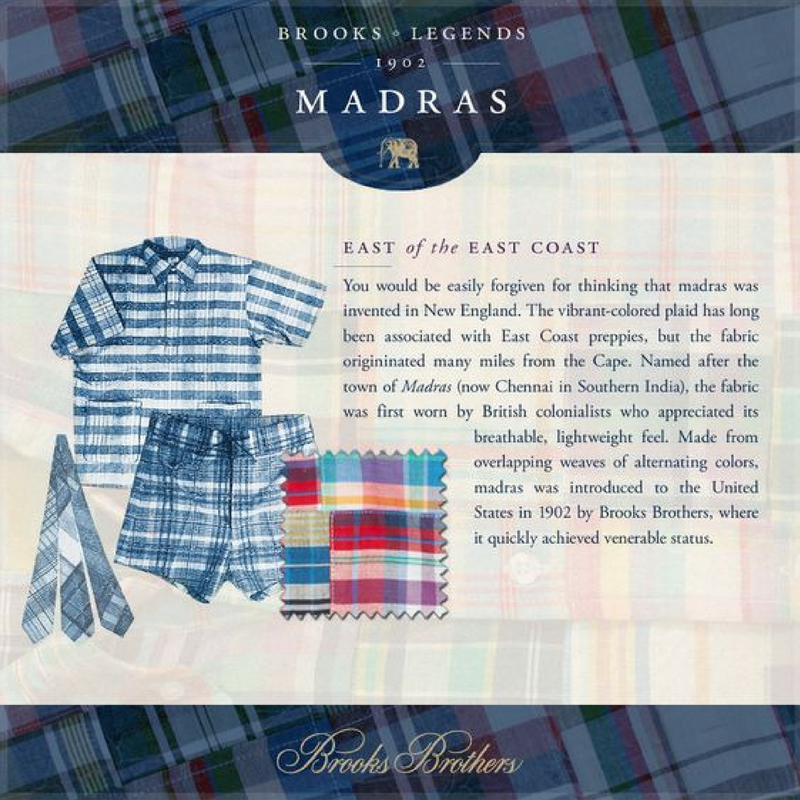






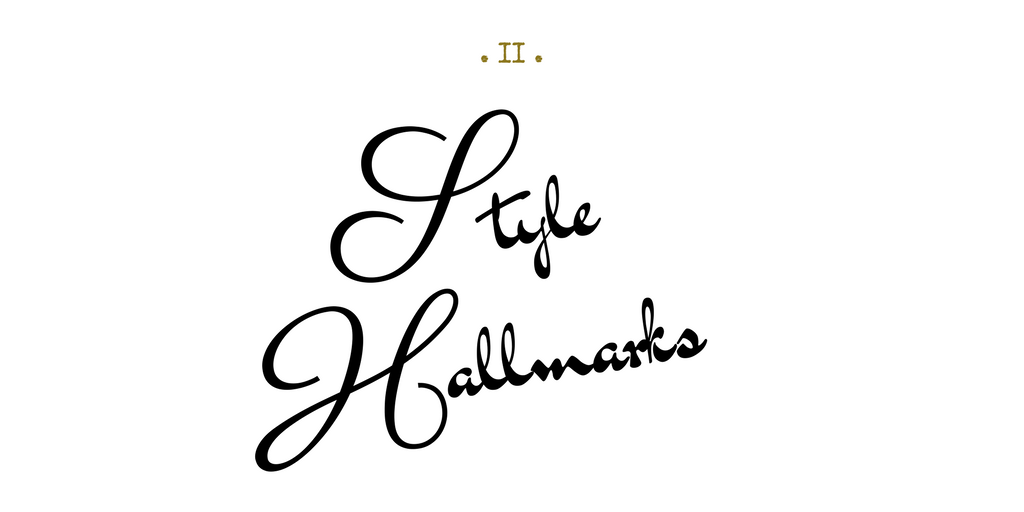
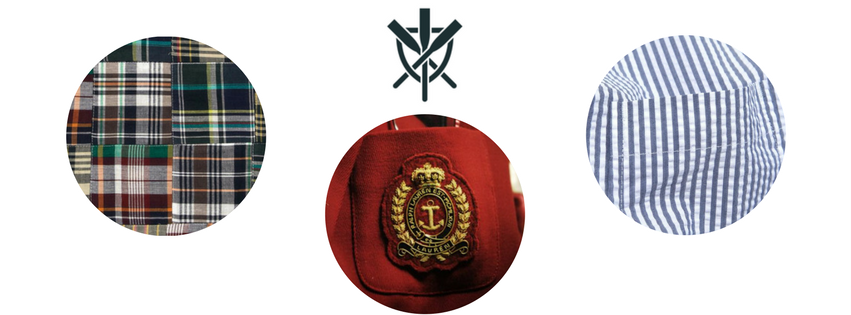



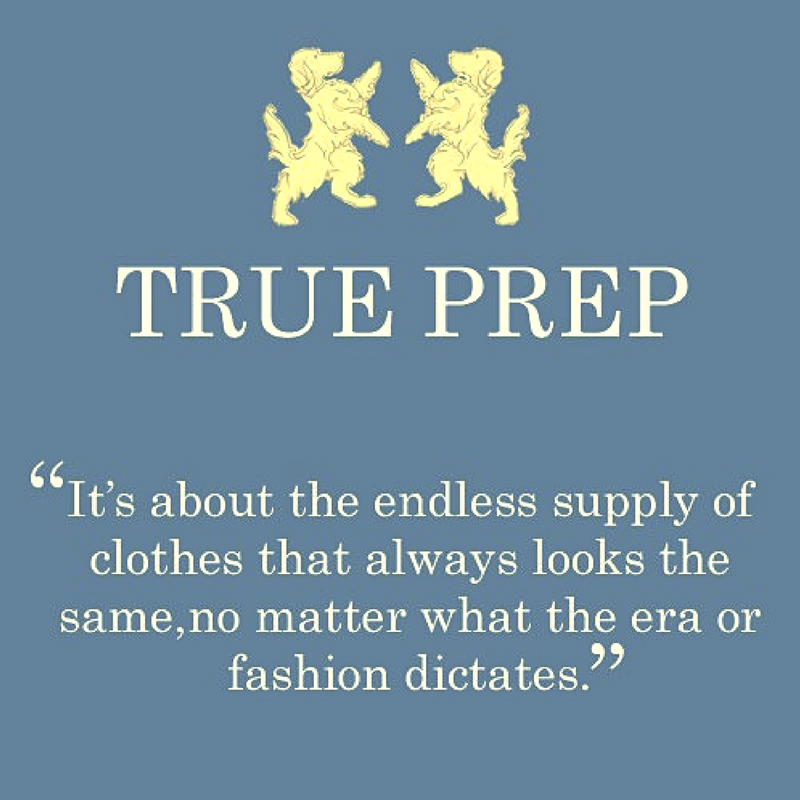
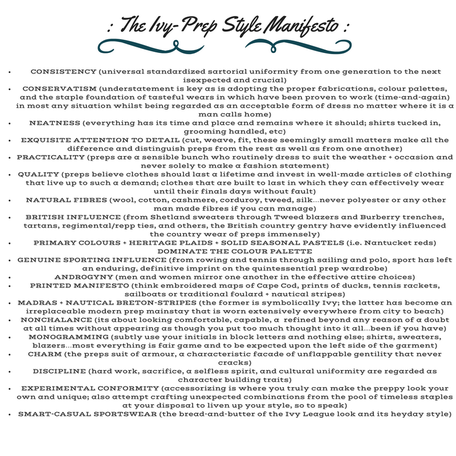

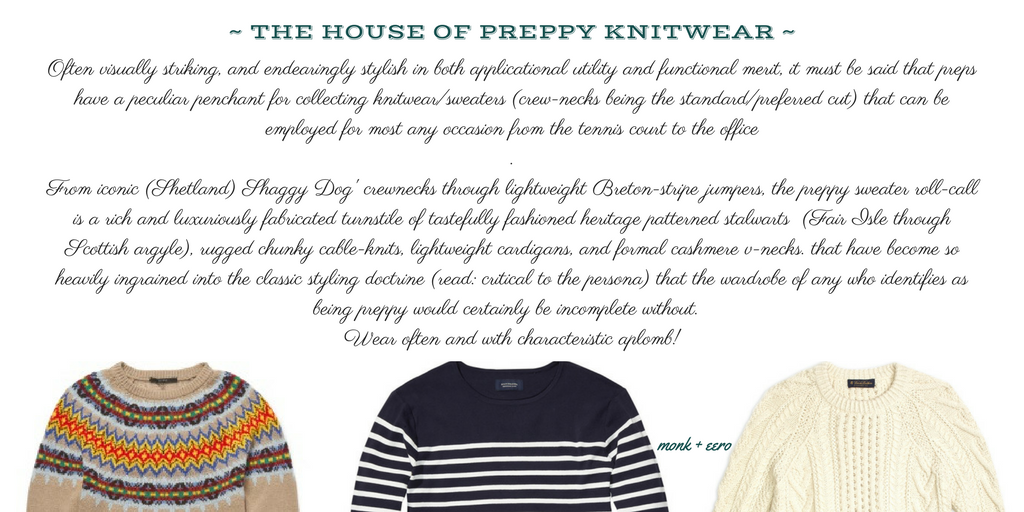

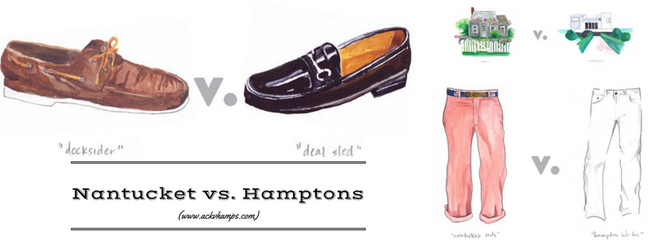


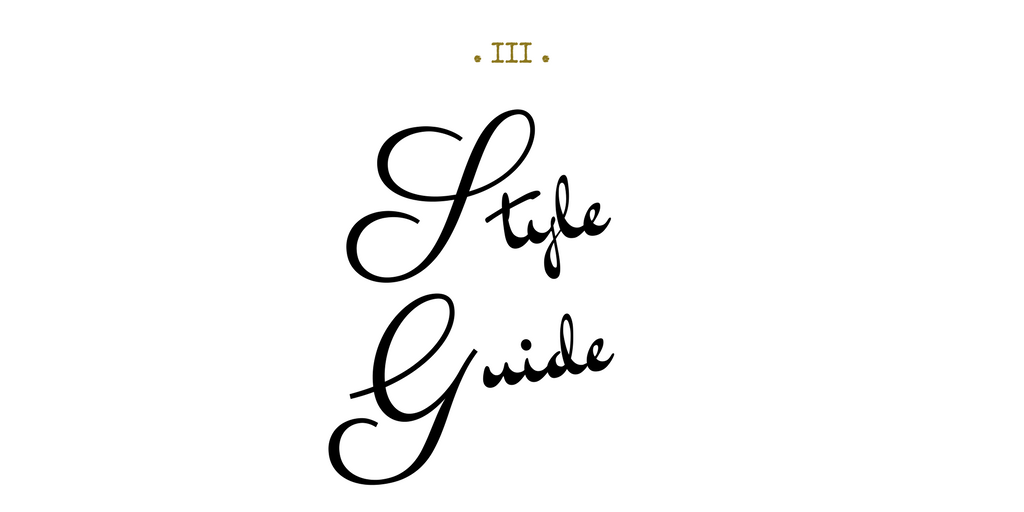



















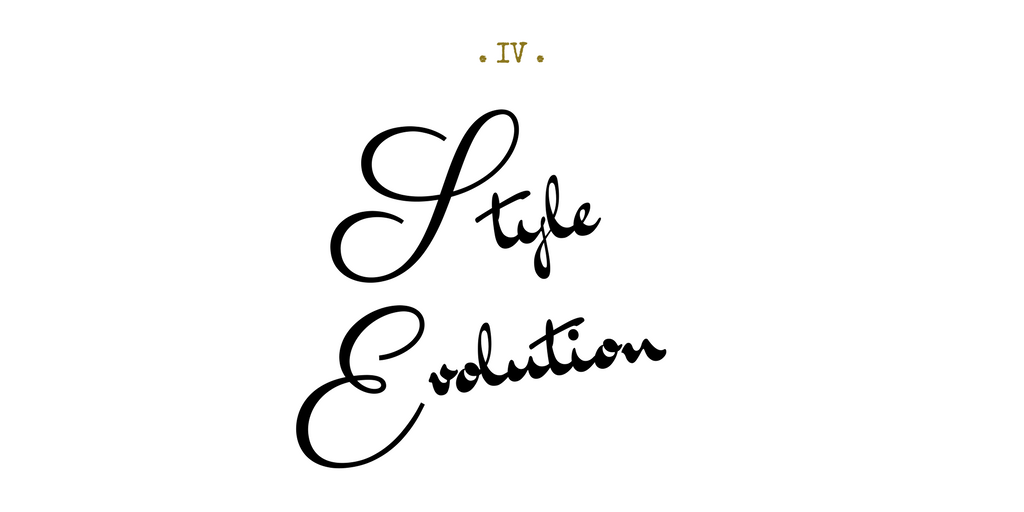





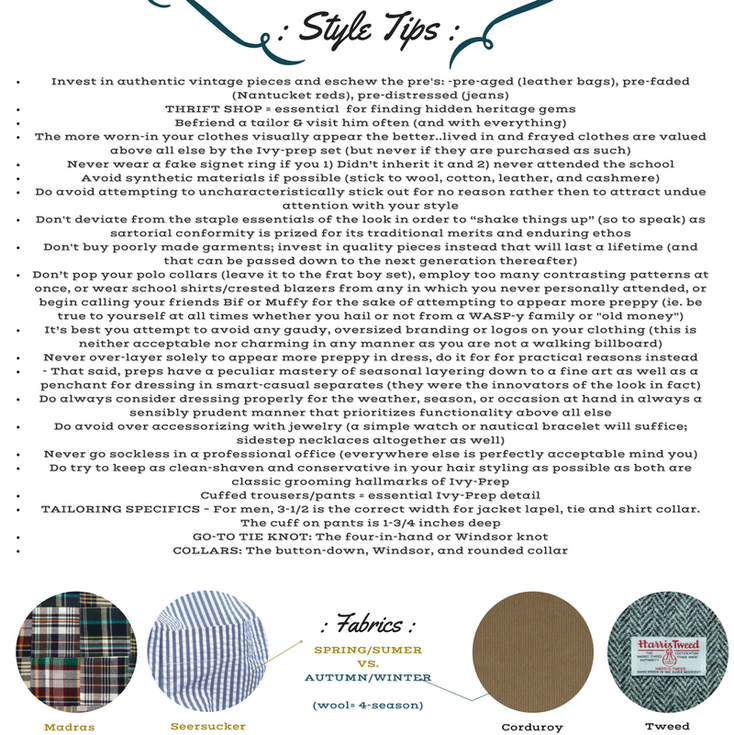


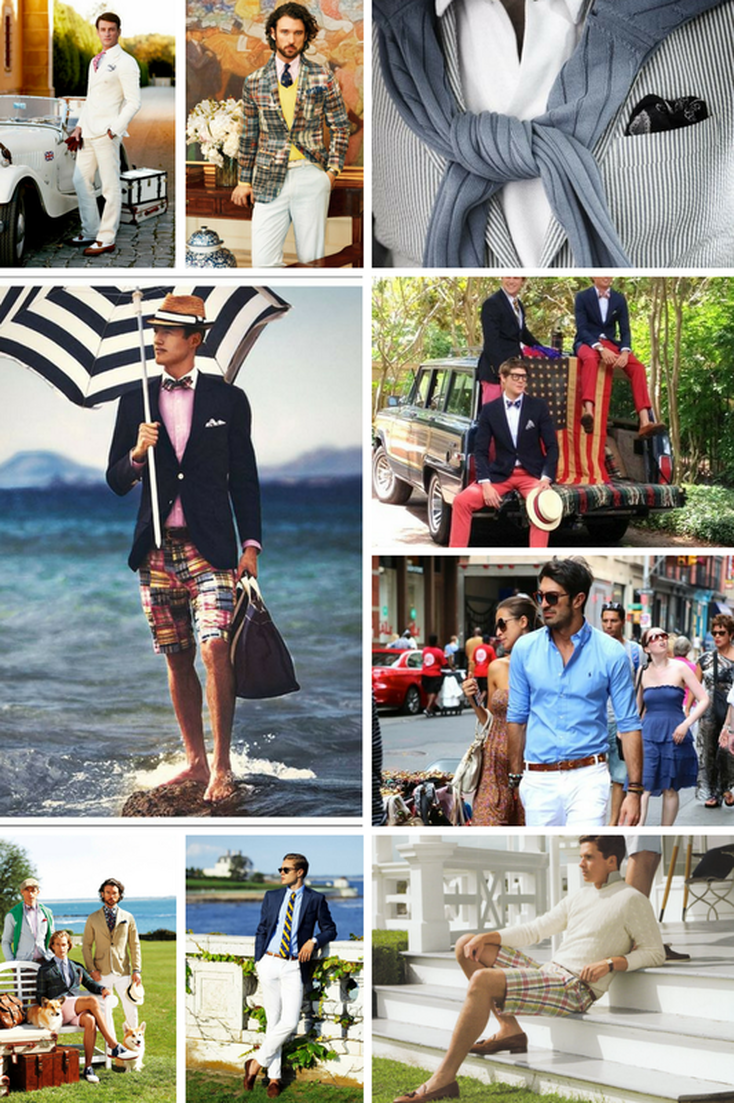
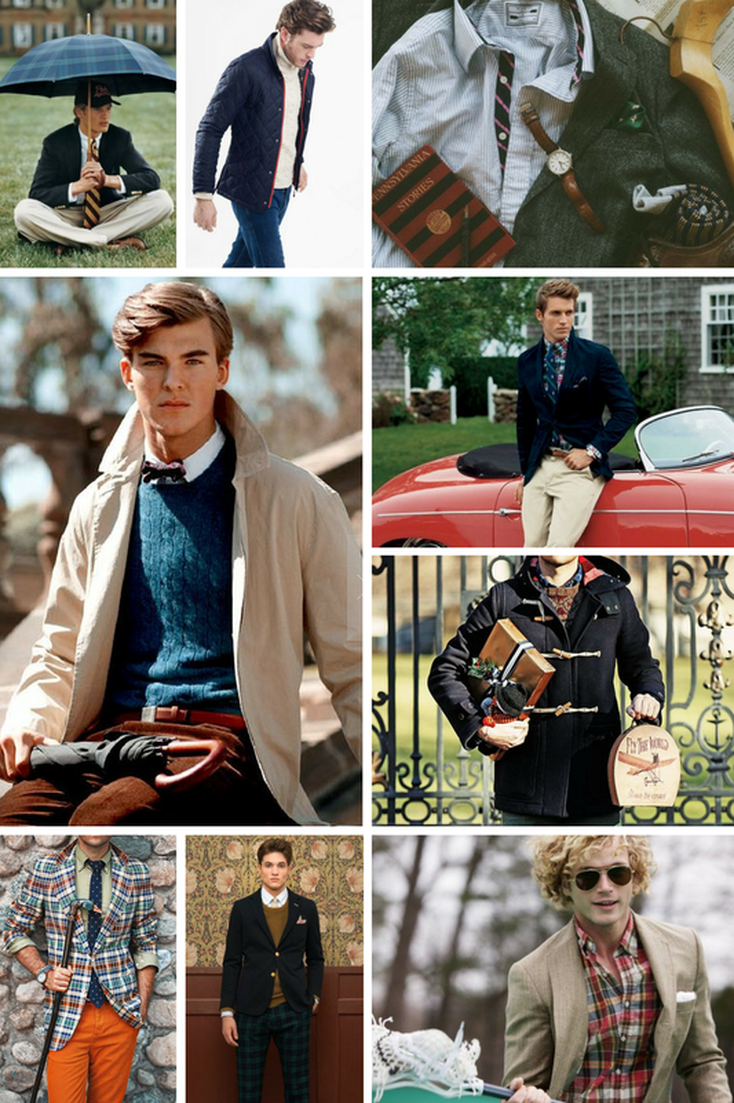


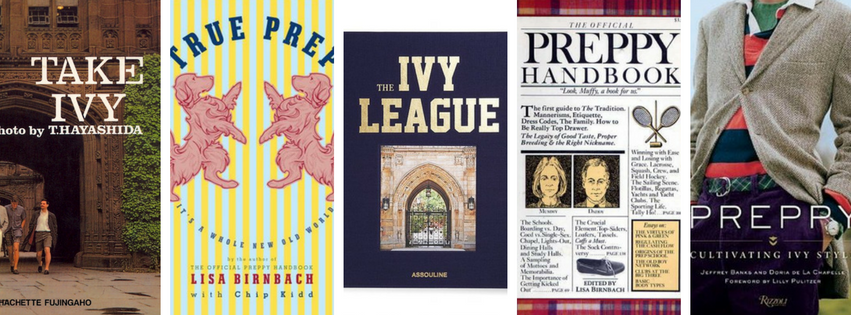


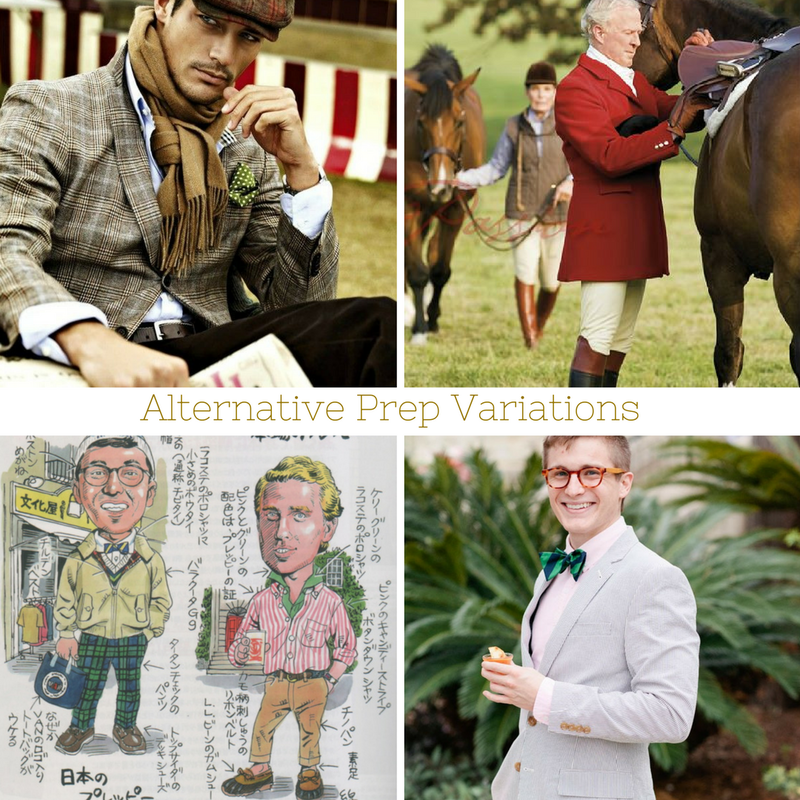



 RSS Feed
RSS Feed



